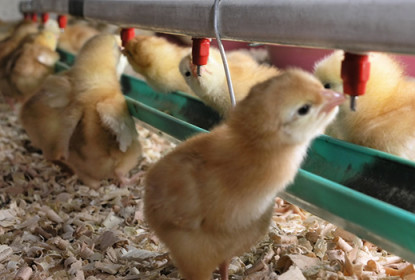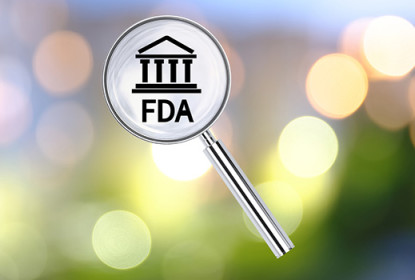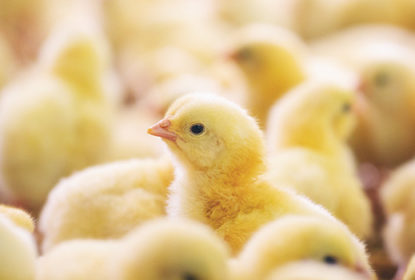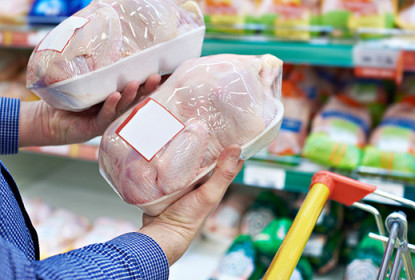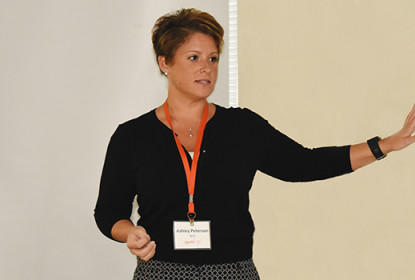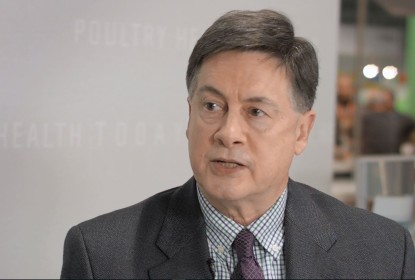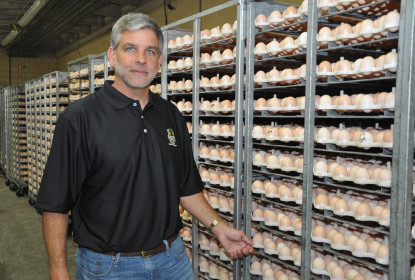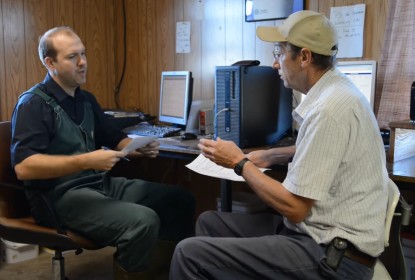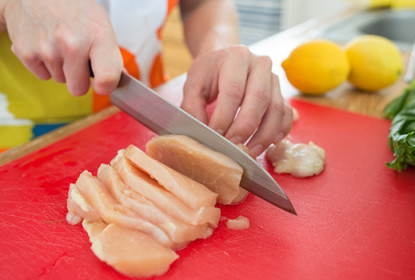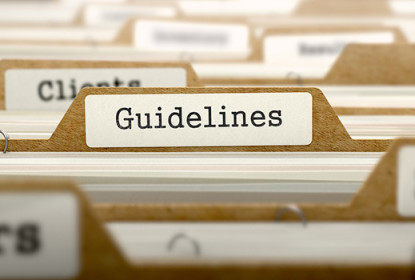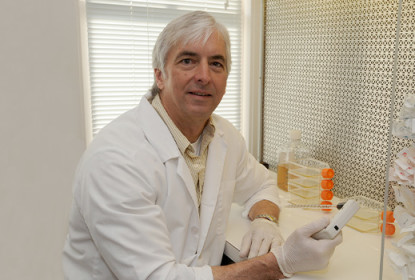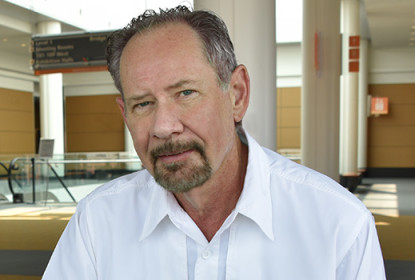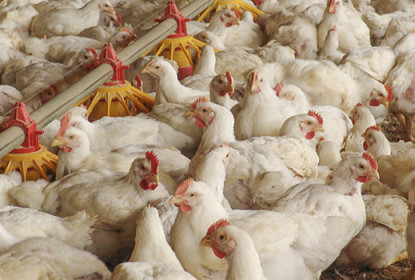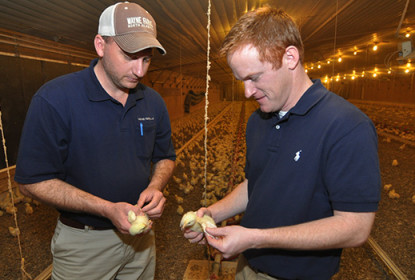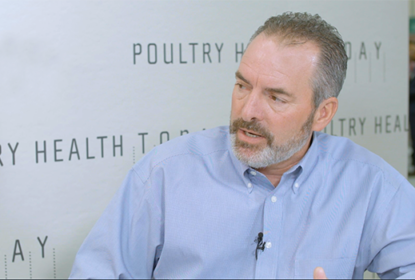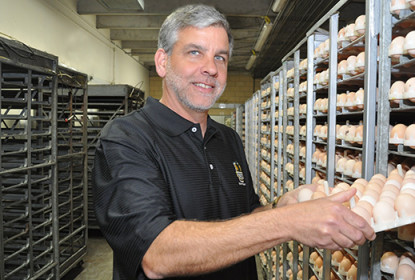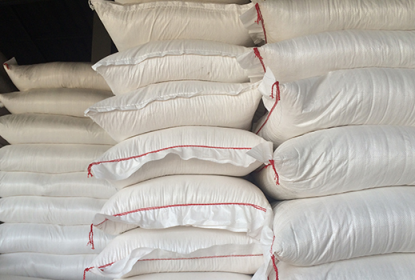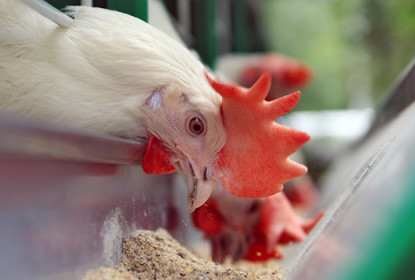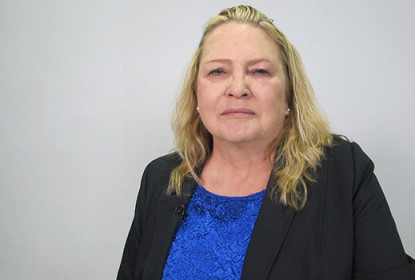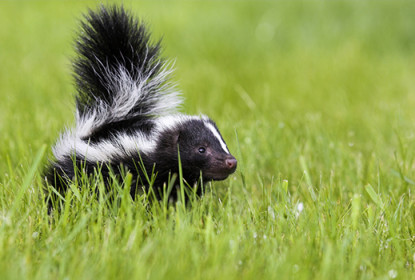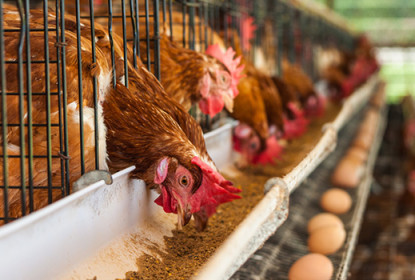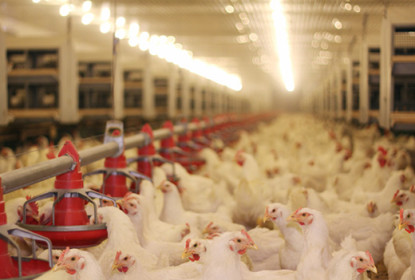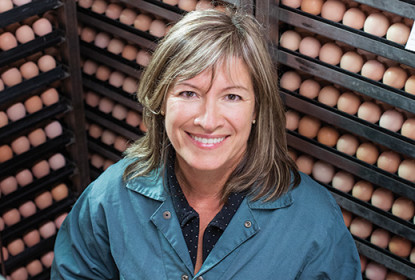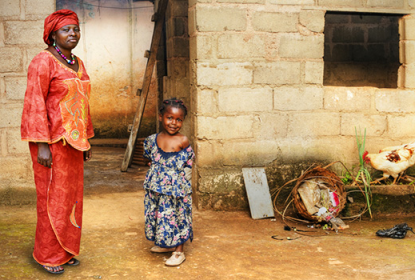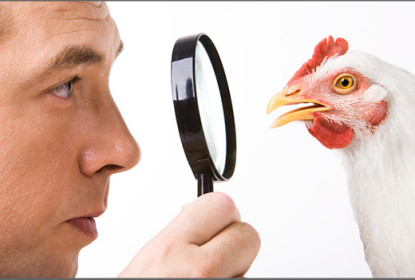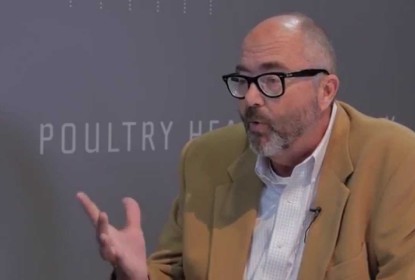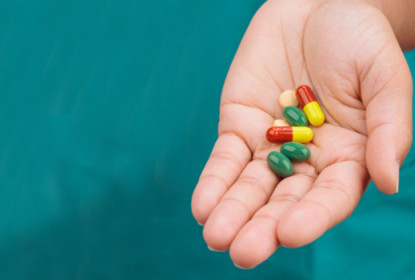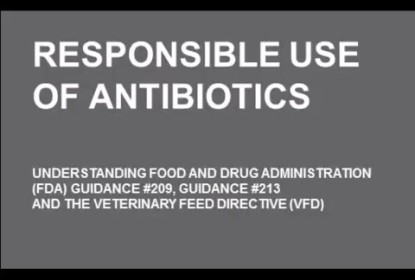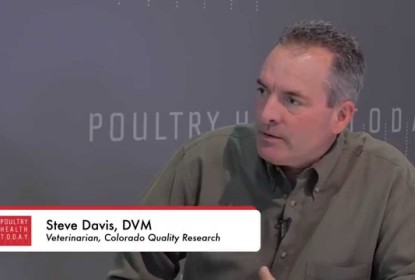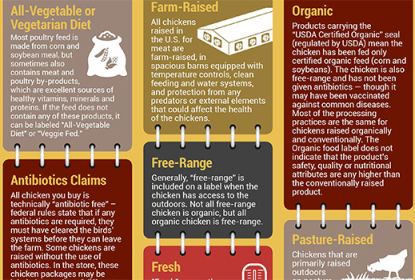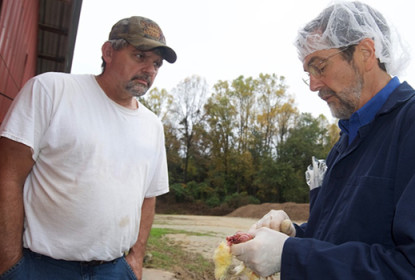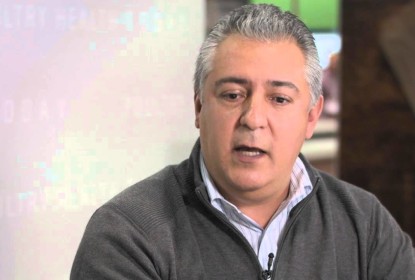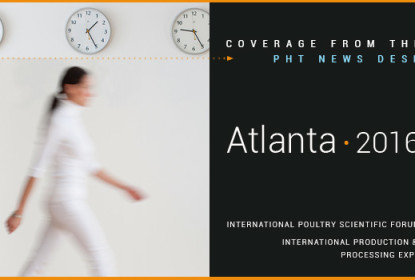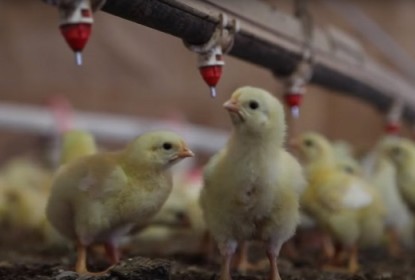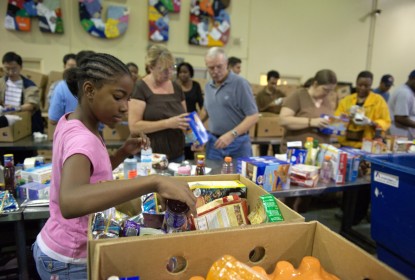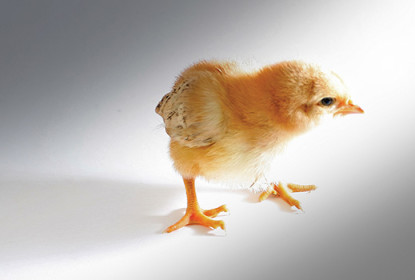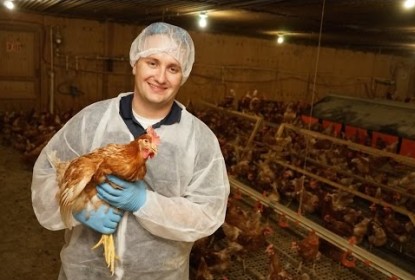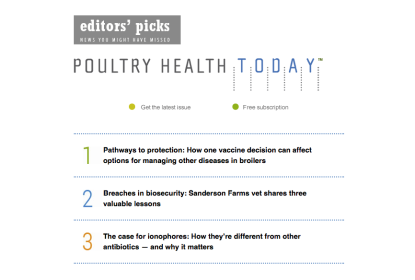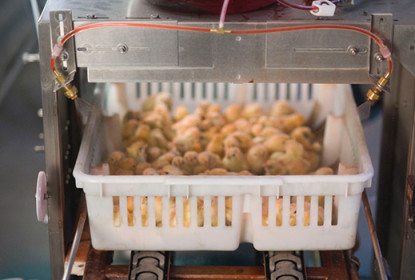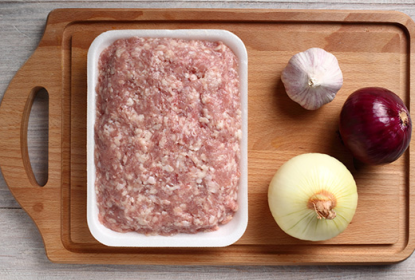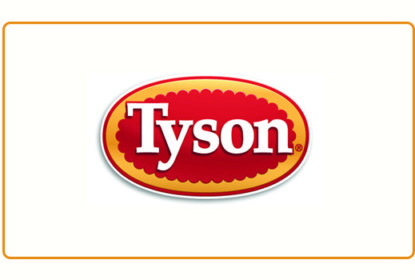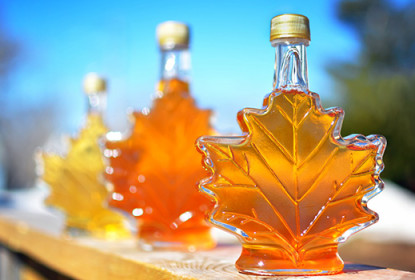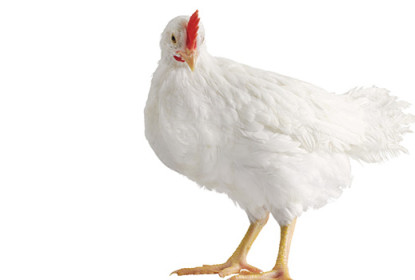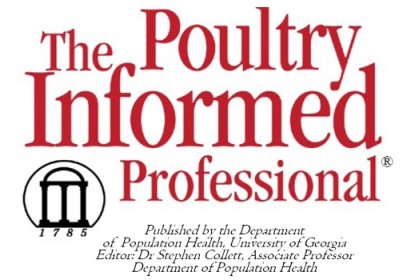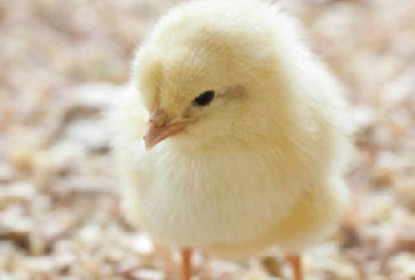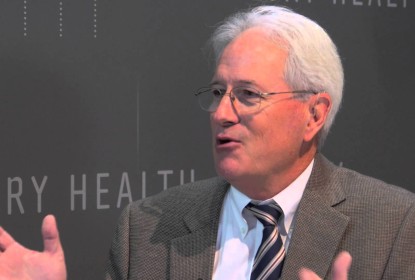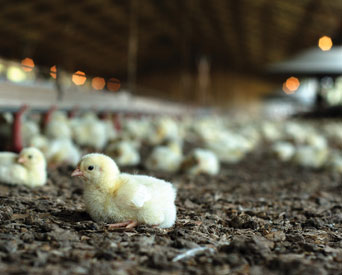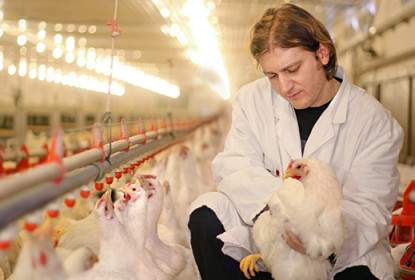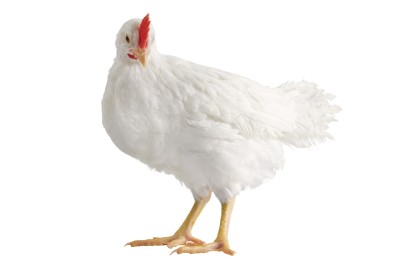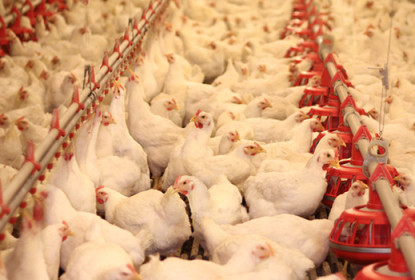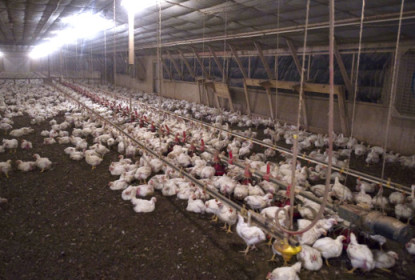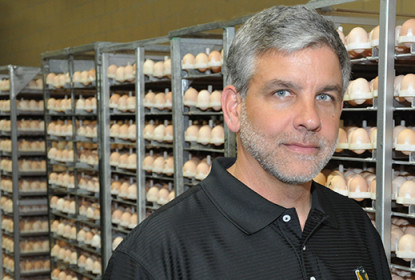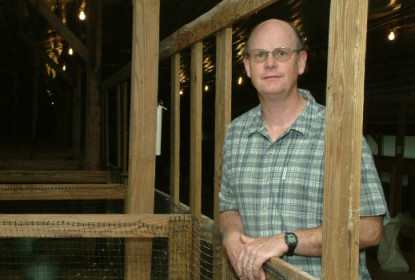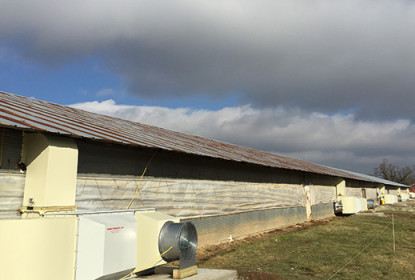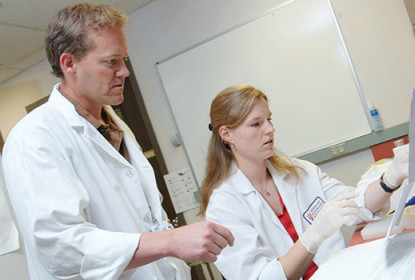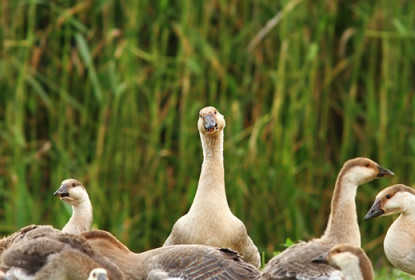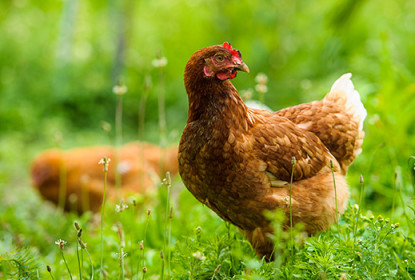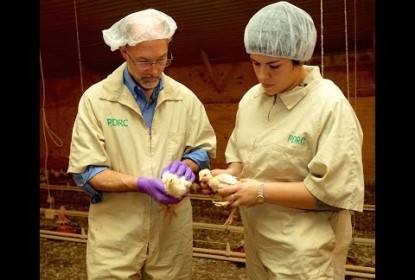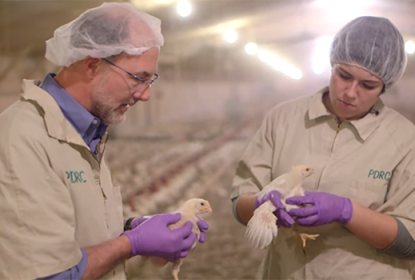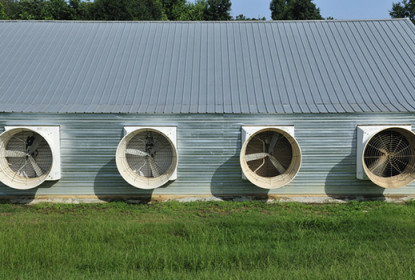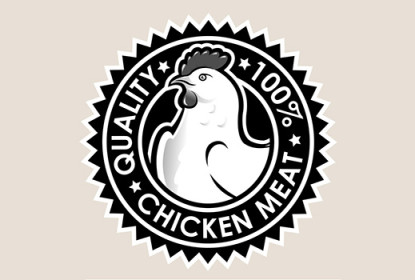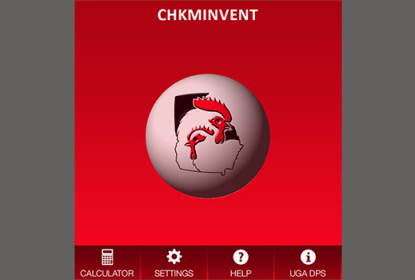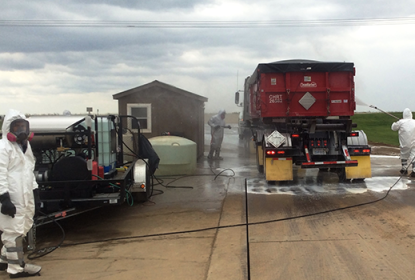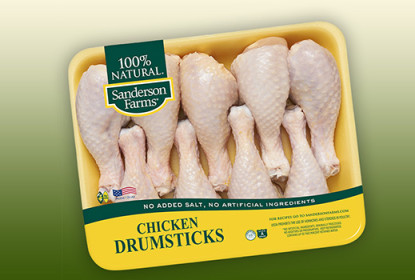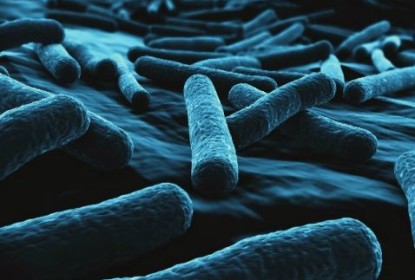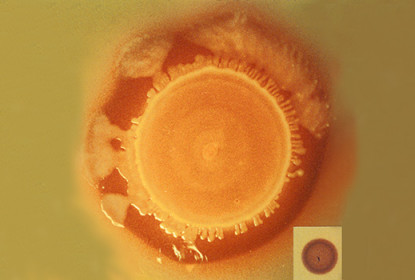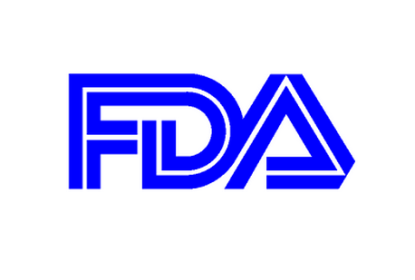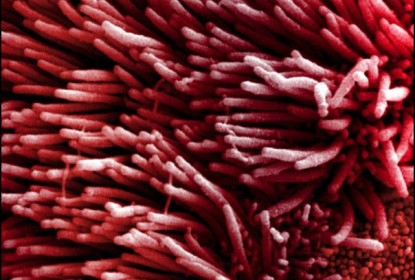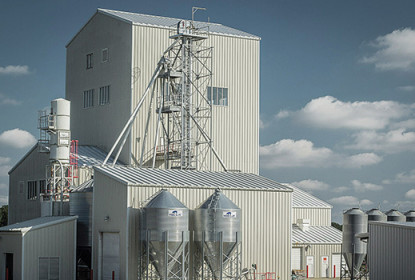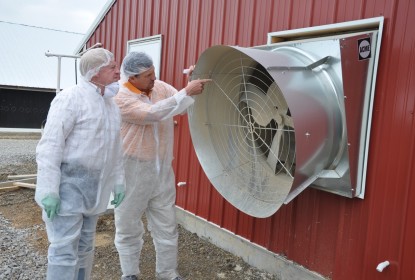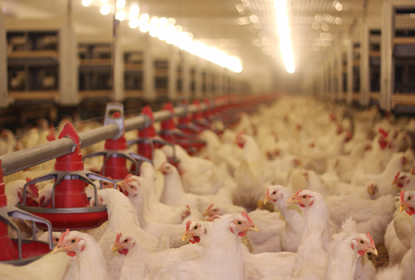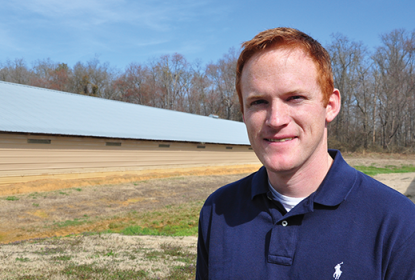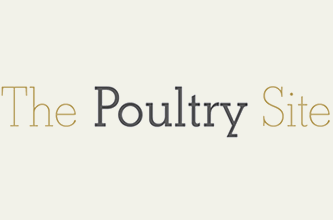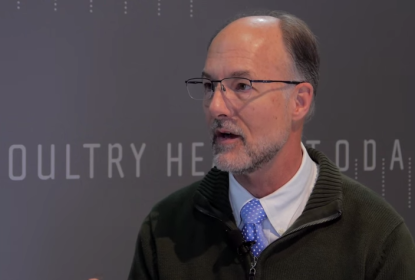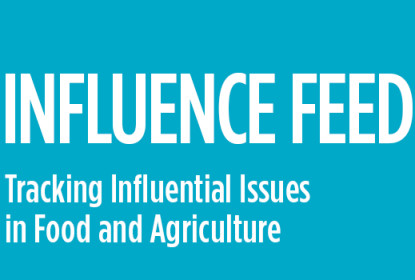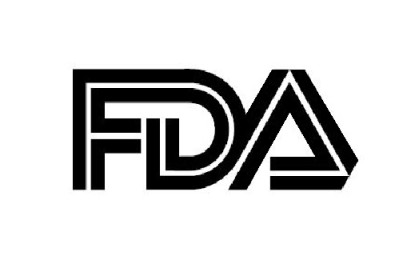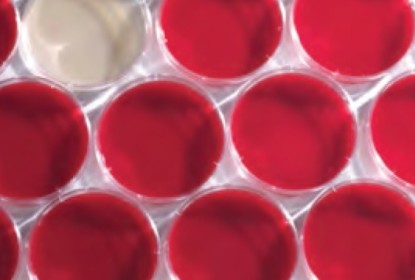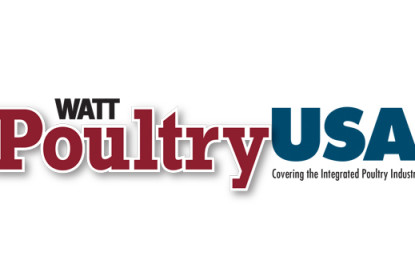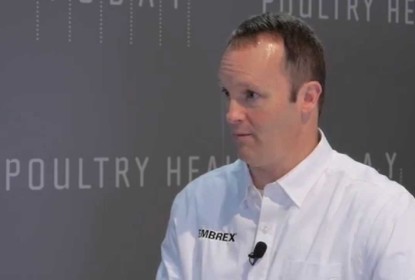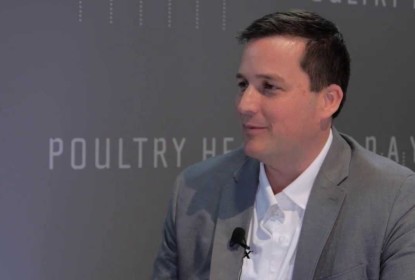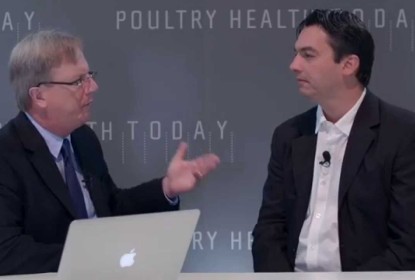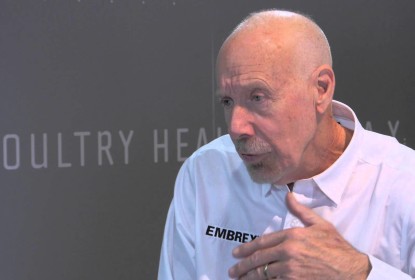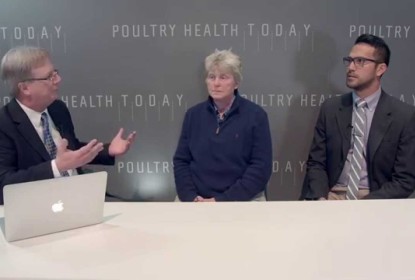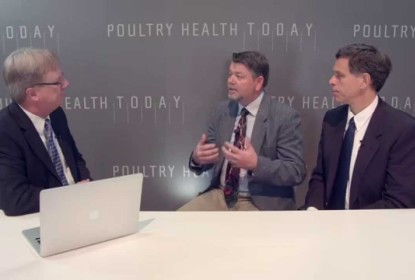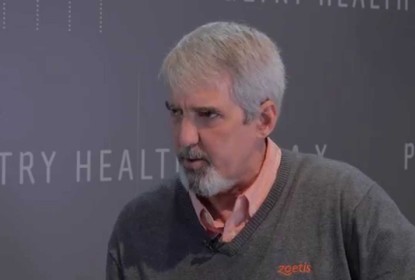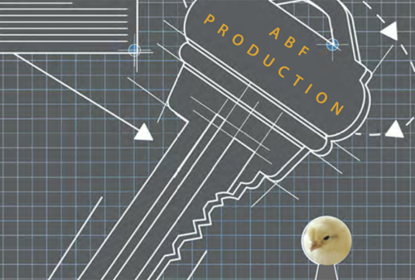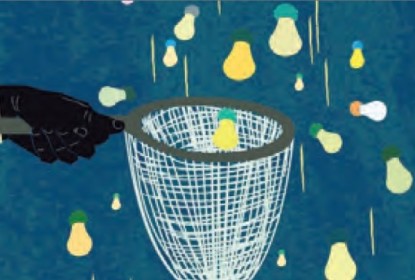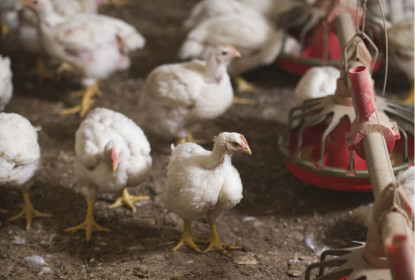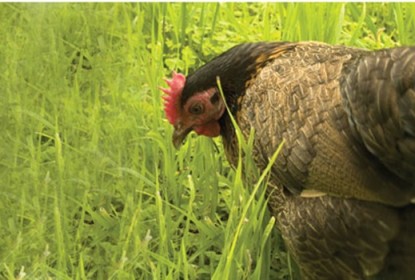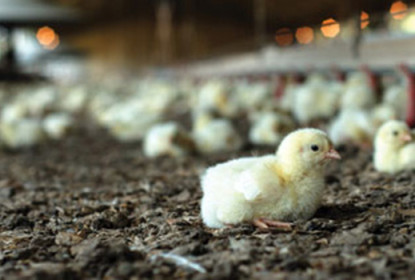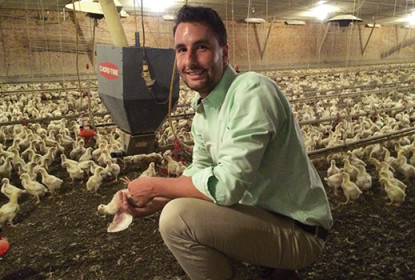Author Archive: Jennifer Grullon
... FDA defers to vet’s ‘clinical judgement’ to link health problems to VFD product’s indications
Jan 24, 2017Jennifer GrullonComments Off on FDA defers to vet’s ‘clinical judgement’ to link health problems to VFD product’s indications
FDA will defer to the expertise of veterinarians to diagnose health conditions requiring veterinary feed directive (VFD) medications, but the agency still expects usage to comply with the product...... Fast growth seen for ABF poultry production, but for how long?
Jan 24, 2017Jennifer GrullonComments Off on Fast growth seen for ABF poultry production, but for how long?
To see how the antibiotic-free (ABF) production trend is playing out with producers’ plans, Poultry Health Today turned to Greg Rennier, PhD, a poultry-market research specialist who tracks product...... View from Europe on ABF
Jan 24, 2017Jennifer GrullonComments Off on View from Europe on ABF
Striving for responsible antibiotic use may be a better strategy than going 100% antibiotic-free, according to a gut-disease specialist.... Producer response to loss of antibiotics assessed in survey
Jan 24, 2017Jennifer GrullonComments Off on Producer response to loss of antibiotics assessed in survey
Increased use of vaccines and better sanitation and biosecurity are the two most common changes livestock and poultry producers are making in response to the loss of shared use antibiotics imposed by...... More diagnostics advised for better IB management in broilers
Jan 23, 2017Jennifer GrullonComments Off on More diagnostics advised for better IB management in broilers
By Lloyd Keck, DVM, ACPV Senior technical services veterinarian, Zoetis Inc.... Infectious bronchitis: Containing an ever-changing disease
Jan 22, 2017Jennifer GrullonComments Off on Infectious bronchitis: Containing an ever-changing disease
By Dieter Vancraeynest, DVM, PhD Zoetis... USDA/APHIS launches VFD training module for health professionals
Jan 20, 2017Jennifer GrullonComments Off on USDA/APHIS launches VFD training module for health professionals
USDA/APHIS has introduced a new training module to help veterinarians and other health professionals get up to speed on the new veterinary feed directive (VFD) rules.... Modified-live E. coli vaccine found safe, effective for water administration to chickens
Jan 15, 2017Jennifer GrullonComments Off on Modified-live E. coli vaccine found safe, effective for water administration to chickens
A modified-live vaccine indicated for active immunization against infections caused by Escherichia coli 078 is safe and also effective when administered in drinking water, according to results of a...... NCC to food industry and consumers: Go slow on slower-growing chickens
Jan 12, 2017Jennifer GrullonComments Off on NCC to food industry and consumers: Go slow on slower-growing chickens
The National Chicken Council is urging food-service and retail industries, non-governmental organizations and consumers to go slow on the slow-growth chicken trend before evaluating its potential...... It’s official: FDA implements GFI #213, paving way for new VFD rules
Jan 09, 2017Jennifer GrullonComments Off on It’s official: FDA implements GFI #213, paving way for new VFD rules
After years of planning, FDA said it has completed implementation of what it calls Guidance for Industry #213 — a process that requires antimicrobials with importance in human medicine to be used...... Get to know the ins and outs of the new veterinary feed directive
Jan 06, 2017Jennifer GrullonComments Off on Get to know the ins and outs of the new veterinary feed directive
In an exclusive interview, William Flynn, DVM, MS, deputy director for science and policy for FDA’s Center for Veterinary Medicine, clarified some hazy points of the new veterinary feed directive...... FDA vet offers guidelines for managing VFDs in integrated poultry operations
Jan 06, 2017Jennifer GrullonComments Off on FDA vet offers guidelines for managing VFDs in integrated poultry operations
Part 6 of an exclusive interview with William Flynn, DVM, MS, deputy director for science and policy for FDA’s Center for Veterinary Medicine on the new VFD that took effect Jan. 1, 2017.... Drugs transitioning from OTC to VFD status
Jan 05, 2017Jennifer GrullonComments Off on Drugs transitioning from OTC to VFD status
A list of over-the-counter drugs that will require a VFD as of January 1, 2017 is provided in this document.... Location, location, location: How FDA defines ‘premises’
Jan 05, 2017Jennifer GrullonComments Off on Location, location, location: How FDA defines ‘premises’
When issuing a veterinary feed directive (VFD), poultry veterinarians are expected to provide the physical location of birds receiving the VFD drug.... Plant inspectors help poultry industry monitor welfare
Jan 05, 2017Jennifer GrullonComments Off on Plant inspectors help poultry industry monitor welfare
Processors understand that the humane treatment of chickens during processing is simply the right thing to do. It also is the law.... FDA vet offers guidance for syncing indications of mature VFD medications to today’s health problems
Jan 03, 2017Jennifer GrullonComments Off on FDA vet offers guidance for syncing indications of mature VFD medications to today’s health problems
Part 3 of an exclusive interview with William Flynn, DVM, MS, deputy director for science and policy for FDA’s Center for Veterinary Medicine, on the new VFD that took effect Jan. 1, 2017.... Understanding lasalocid: Veterinarian offers tips for getting the most from this proven anticoccidial
Jan 02, 2017Jennifer GrullonComments Off on Understanding lasalocid: Veterinarian offers tips for getting the most from this proven anticoccidial
Developing a long-term strategy for managing coccidiosis in broilers is more critical today than ever before — not just to preserve the efficacy of our remaining medications, but also to keep...... Laboratory vs. clinical diagnosis: Which is needed for a VFD?
Dec 22, 2016Jennifer GrullonComments Off on Laboratory vs. clinical diagnosis: Which is needed for a VFD?
Part 2 of an exclusive interview with William Flynn, DVM, MS, deputy director for science and policy for FDA’s Center for Veterinary Medicine, on the new VFD that took effect Jan. 1, 2017.... Making the transition: Tips for managing medicated feed through the Jan. 1 VFD deadline
Dec 21, 2016Jennifer GrullonComments Off on Making the transition: Tips for managing medicated feed through the Jan. 1 VFD deadline
Part 1 of an exclusive interview with William Flynn, DVM, MS, deputy director for science and policy for FDA’s Center for Veterinary Medicine, on the new VFD that took effect January 1, 2017.... Poultry companies need to balance consumer preferences with flock health, welfare and food safety
Dec 19, 2016Jennifer GrullonComments Off on Poultry companies need to balance consumer preferences with flock health, welfare and food safety
Suzanne Dougherty, DVM, a consulting poultry veterinarian based in Alabama, talks with Poultry Health Today about the challenges of reducing or even eliminating antibiotics in broiler production...... Q&A: Tips for complying with the updated VFD rule
Dec 16, 2016Jennifer GrullonComments Off on Q&A: Tips for complying with the updated VFD rule
VFD News Center Q&A is a series of interviews about the updated Veterinary Feed Directive.... NCC scientist: Food safety is everyone’s job
Dec 15, 2016Jennifer GrullonComments Off on NCC scientist: Food safety is everyone’s job
Food safety is a chain stretching from producers to consumers. Ashley Peterson, PhD, of the National Chicken Council, shared her insights at the recent “Young Chicken Gross Pathology Workshop” at...... Addressing consumers’ misconceptions about antibiotic use in poultry
Dec 15, 2016Jennifer GrullonComments Off on Addressing consumers’ misconceptions about antibiotic use in poultry
Gary Thornton, editor of Poultry USA, talks about the importance and the challenges of communicating with consumers about the role of antibiotics in poultry production.... Opinion: VFDs — More work, same result?
Dec 14, 2016Jennifer GrullonComments Off on Opinion: VFDs — More work, same result?
by Philip A. Stayer, DVM, Corporate Veterinarian, Sanderson Farms, Inc.... New 7-minute video from FDA details new VFD rule
Dec 07, 2016Jennifer GrullonComments Off on New 7-minute video from FDA details new VFD rule
FDA has released a 7-minute video detailing the updated veterinary feed directive (VFD) rule effective January 1, 2017.... Less than 30 days and counting before new VFD rules take effect
Dec 01, 2016Jennifer GrullonComments Off on Less than 30 days and counting before new VFD rules take effect
Veterinarians, feed mills and poultry producers are into the final stretch and now have less than 30 days to prepare for the new veterinary feed directive rules that take effect January 1, 2017.... Imaging technology quickly finds wooden-breast tissue
Dec 01, 2016Jennifer GrullonComments Off on Imaging technology quickly finds wooden-breast tissue
Imaging-based technologies can rapidly and non-destructively detect the presence and severity of a condition known as wooden breast (WB) in boneless, skinless broiler breast fillets, according to...... Video provides practical biosecurity tips for poultry
Nov 12, 2016Jennifer GrullonComments Off on Video provides practical biosecurity tips for poultry
A training video that provides practical biosecurity tips for protecting commercial poultry flocks from avian influenza and other infectious diseases has been developed by the University of Maryland...... Sneak peek: Case history of an FDA VFD inspection
Nov 10, 2016Jennifer GrullonComments Off on Sneak peek: Case history of an FDA VFD inspection
Random FDA inspections to ensure compliance with the updated veterinary feed directive (VFD) rule are understandably causing some trepidation throughout the poultry industry. Fortunately, the...... Get to know the lesser-known risk factors of necrotic enteritis in broilers
Nov 10, 2016Jennifer GrullonComments Off on Get to know the lesser-known risk factors of necrotic enteritis in broilers
By John A. Smith, DVM, MS, MAM Alectryon LLC Baldwin, Georgia... Straight talk with FDA about the VFD in poultry
Nov 07, 2016Jennifer GrullonComments Off on Straight talk with FDA about the VFD in poultry
Dan McChesney, PhD, director of surveillance and compliance for FDA’s Center of Veterinary Medicine, recently visited with Poultry Health Today to talk about the new VFD regulations and their...... Improved understanding may end “white chick” era
Nov 07, 2016Jennifer GrullonComments Off on Improved understanding may end “white chick” era
By Philip A. Stayer, DVM Corporate Veterinarian Sanderson Farms, Inc.... Are there practical alternatives to ionophores?
Nov 05, 2016Jennifer GrullonComments Off on Are there practical alternatives to ionophores?
Proponents of raising broilers without ionophores and other antibiotics have proposed putting more emphasis on farm management, biosecurity and alternatives to anticoccidials.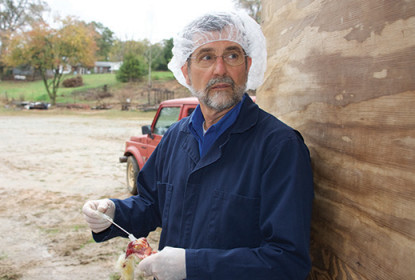
Antibiotic-free, Flock welfare, Gut Health, Infectious Diseases, ippe2016 - Highlights from our latest issue, News, PHT GLOBAL, PHT US
... The Poultry Smith
Nov 02, 2016Jennifer GrullonComments Off on The Poultry Smith
In this exclusive interview with Poultry Health Today, Fieldale Farms veterinarian John Smith reflects on his career, the state of the US poultry industry and, most importantly, what it needs to do...... FDA issues final guidelines for VFD forms
Nov 02, 2016Jennifer GrullonComments Off on FDA issues final guidelines for VFD forms
FDA has issued final guidelines for veterinary feed directive (VFD) forms that veterinarians will issue when authorizing the use of a medicated feed additive containing an antibiotic deemed medically...... Reports of colistin resistance prompting layer producers to rethink E. coli management
Oct 30, 2016Jennifer GrullonComments Off on Reports of colistin resistance prompting layer producers to rethink E. coli management
By Dieter Vancraeynest, DVM, PhD Zoetis dieter.vancraeynest@zoetis.com... Veterinarians can test drive VFD process by issuing a ‘VFR’
Oct 30, 2016Jennifer GrullonComments Off on Veterinarians can test drive VFD process by issuing a ‘VFR’
Looking to get some practice writing veterinary feed directives (VFD) before the new rules kick in January 1?... How the AST improves management of coccidiosis and flock performance
Oct 25, 2016Jennifer GrullonComments Off on How the AST improves management of coccidiosis and flock performance
It’s been over a century since coccidial oocysts were first observed in the ceca of a chicken. Since the 1940s, many anticoccidials have been developed to combat these protozoan parasites....... Selfies and other images not proof of VCPR
Oct 19, 2016Jennifer GrullonComments Off on Selfies and other images not proof of VCPR
Videos or photos cannot be used as a way to establish the veterinary-client-patient relationship (VCPR) needed to obtain veterinary feed directives (VFDs), according to William T. Flynn, DVM, MS,...... Backyard flocks biggest risk for spreading vvIBDV in US
Oct 17, 2016Jennifer GrullonComments Off on Backyard flocks biggest risk for spreading vvIBDV in US
By Daral J. Jackwood, PhD Professor, Department of Veterinary Preventive Medicine Food Animal Health Research Program Ohio Agricultural Research and Development Center The Ohio State University... FDA’s strategy for VFD enforcement: Education first
Oct 12, 2016Jennifer GrullonComments Off on FDA’s strategy for VFD enforcement: Education first
FDA’s first priority when implementing the new veterinary feed directive rule is educating and training all stakeholders, which includes veterinarians, poultry producers and feed mills.... Q&A: What’s behind FDA’s updated veterinary feed directive?
Oct 11, 2016Jennifer GrullonComments Off on Q&A: What’s behind FDA’s updated veterinary feed directive?
VFD News Center Q&A is a series of interviews about the updated veterinary feed directive.... Biosecurity in poultry production: What makes it work — and what doesn’t
Oct 09, 2016Jennifer GrullonComments Off on Biosecurity in poultry production: What makes it work — and what doesn’t
By Jean-Pierre Vaillancourt, DMV, MSc, PhD Professor, director Research Group on the Epidemiology of Zoonoses and Public Health Faculté de Médecine Vétérinaire Associate director Université...... Q&A: Tips for complying with the updated VFD rule
Oct 06, 2016Jennifer GrullonComments Off on Q&A: Tips for complying with the updated VFD rule
VFD News Center Q&A is a series of interviews about the updated veterinary feed directive. They are developed by the editors of Poultry Health Today on behalf of Zoetis.... Q&A: What’s behind FDA’s updated veterinary feed directive?
Oct 06, 2016Jennifer GrullonComments Off on Q&A: What’s behind FDA’s updated veterinary feed directive?
VFD News Center Q&A is a series of interviews about the updated veterinary feed directive. They are developed by the editors of Poultry Health Today on behalf of Zoetis.... What if it takes more than one feed mill to complete a VFD order?
Oct 06, 2016Jennifer GrullonComments Off on What if it takes more than one feed mill to complete a VFD order?
Under the new veterinary feed directive rule, the same feed mill is supposed to fill the entire VFD order for feed containing a medically important antibiotic.... FDA: Some antibiotics still OK for production purposes
Oct 05, 2016Jennifer GrullonComments Off on FDA: Some antibiotics still OK for production purposes
New FDA guidelines that discourage using medically important antibiotics for promoting growth in food animals appear to have been well-received by both producers and most consumer activists. Change...... FDA lists two principles for “judicious” antimicrobial use
Oct 04, 2016Jennifer GrullonComments Off on FDA lists two principles for “judicious” antimicrobial use
FDA strongly acknowledges that effective antimicrobials are critically important for combating infectious disease in both humans and animals.... Guidance for Industry #233: Veterinary Feed Directive Common Format Questions and Answers
Sep 26, 2016Jennifer GrullonComments Off on Guidance for Industry #233: Veterinary Feed Directive Common Format Questions and Answers
This document provides examples that illustrate how a common VFD format might appear and how some of the information on the VFD may be pre-populated by an animal health company.... Want to use a VFD medication in a combination? Better check with your vet first
Sep 22, 2016Jennifer GrullonComments Off on Want to use a VFD medication in a combination? Better check with your vet first
Some poultry medications requiring a veterinary feed directive (VFD) are indicated for use alone while others are approved for use in combination with over-the-counter (OTC) medications that don’t...... Condemnations, mortality shift focus to E. coli vaccination in some broiler flocks
Sep 16, 2016Jennifer GrullonComments Off on Condemnations, mortality shift focus to E. coli vaccination in some broiler flocks
While infectious bronchitis remains a serious threat to broiler health, it often opens the door to the more costly secondary infection, E coli, explained Kalen Cookson, DVM, director of clinical...... Updated VFD rule may help producers save money
Sep 12, 2016Jennifer GrullonComments Off on Updated VFD rule may help producers save money
The updated veterinary feed directive (VFD) rule that takes effect in January 2017 does not require veterinarians to indicate the amount of feed that needs to be manufactured — a decision made by...... Necrotic enteritis: Can it be managed effectively in NAE flocks?
Sep 12, 2016Jennifer GrullonComments Off on Necrotic enteritis: Can it be managed effectively in NAE flocks?
Necrotic enteritis (NE) is not only a big problem in flocks raised without antibiotics, there’s a wide variation in how it presents itself, Steve Davis, DVM, president of Colorado Quality Research,...... IBV variants in poultry: Aiming for cross-protection
Sep 12, 2016Jennifer GrullonComments Off on IBV variants in poultry: Aiming for cross-protection
By Mark W. Jackwood, PhD Poultry Diagnostic and Research Center Department of Population Health College of Veterinary Medicine University of Georgia... Solving the mystery of gangrenous dermatitis in broilers
Sep 07, 2016Jennifer GrullonComments Off on Solving the mystery of gangrenous dermatitis in broilers
By Philip A. Stayer, DVM Corporate Veterinarian Sanderson Farms, Inc.... Survey correlates anticoccidial rotation with improved coccidiosis management
Sep 07, 2016Jennifer GrullonComments Off on Survey correlates anticoccidial rotation with improved coccidiosis management
A six-country survey in North and South America demonstrates that rotation of in-feed anticoccidials correlates with more effective coccidiosis management in broilers.... What’s the most humane way to raise a chicken? Watch and listen
Aug 20, 2016Jennifer GrullonComments Off on What’s the most humane way to raise a chicken? Watch and listen
By Philip A. Stayer, DVM Corporate Veterinarian Sanderson Farms, Inc.... Plans in the works for updating labels on existing feed affected by VFD
Aug 18, 2016Jennifer GrullonComments Off on Plans in the works for updating labels on existing feed affected by VFD
Poultry producers won’t have to discard existing inventories of feed blended with medically important antibiotics prior to January 2017 to comply with new veterinary feed directive (VFD)...... Anticoccidial rotation, good husbandry can improve coccidiosis control
Aug 16, 2016Jennifer GrullonComments Off on Anticoccidial rotation, good husbandry can improve coccidiosis control
Poultry producers worldwide know the importance of cutting losses from coccidiosis – the parasitic disease that is still causing significant losses in growth rate and feed efficiency.... Feed distributors won’t need to provide VFD or letter to acquire Type A medications
Aug 09, 2016Jennifer GrullonComments Off on Feed distributors won’t need to provide VFD or letter to acquire Type A medications
US feed distributors will not need to provide a veterinary feed directive (VFD) or acknowledgment letter to pharmaceutical companies to obtain a Type A medicated article containing VFD medications,...... Hens in enriched colony system appear more stressed, flighty
Aug 05, 2016Jennifer GrullonComments Off on Hens in enriched colony system appear more stressed, flighty
Hens in an enriched colony system were more stressed and flighty than conventionally caged birds in a study from Mississippi State and Texas A&M Universities.... Electronic systems expected to simply VFD process
Aug 02, 2016Jennifer GrullonComments Off on Electronic systems expected to simply VFD process
Electronic systems will make it easy for veterinarians to provide veterinary feed directives in compliance with the updated VFD rule that takes full effect in January 2017, say developers of the...... Resistance will continue despite new rules, professor predicts
Aug 01, 2016Jennifer GrullonComments Off on Resistance will continue despite new rules, professor predicts
New rules governing the use of antibiotics in food animals will not reduce antimicrobial resistance, a Kansas State University professor has predicted.... Managing ionophores and diets for best performance
Jul 31, 2016Jennifer GrullonComments Off on Managing ionophores and diets for best performance
Carla Price, PhD, a consulting poultry nutritionist based in Mississippi, says that for best results, producers need to consider differences in ionophores when formulating poultry feeds.... Skunks, rabbits can indirectly transmit AI viruses, government research indicates
Jul 29, 2016Jennifer GrullonComments Off on Skunks, rabbits can indirectly transmit AI viruses, government research indicates
Striped skunks and cottontail rabbits can indirectly transmit low-pathogenic avian influenza (LPAI) to mallard ducks, government research indicates.... S. enteritidis shedding more frequent among hens in conventional cages
Jul 24, 2016Jennifer GrullonComments Off on S. enteritidis shedding more frequent among hens in conventional cages
Fecal shedding of Salmonella enteritidis was significantly more frequent among experimentally infected laying hens in conventional cages compared to hens housed in enriched colony cages, indicates a...... More light at night reduces daytime heat stress in broilers
Jul 17, 2016Jennifer GrullonComments Off on More light at night reduces daytime heat stress in broilers
Extended lighting periods help boost welfare and production of big broilers during high seasonal temperatures, a University of Georgia study showed.... Integrated poultry companies can store VFDs in one place
Jul 15, 2016Jennifer GrullonComments Off on Integrated poultry companies can store VFDs in one place
Integrated poultry companies that obtain a veterinary feed directive from a staff veterinarian for use in company-owned feed mills and flocks can store the VFD forms in one place.... Broiler study shows challenges and potential of drug-free production
Jul 08, 2016Jennifer GrullonComments Off on Broiler study shows challenges and potential of drug-free production
Broilers raised in a drug-free program had a higher feed-conversion ratio (FCR), decreased mean daily weight and decreased mean live marketing weight despite administration of antibiotic
Antibiotic-free, Global TOP NEWS, Gut Health, ippe2016- Interviews with experts, News, PHT GLOBAL, PHT US, TOP NEWS, Videos
... Mathis: Long-term planning key to effective coccidiosis management
Jul 07, 2016Jennifer GrullonComments Off on Mathis: Long-term planning key to effective coccidiosis management
Whether the production system is antibiotic-free or conventional, long-term planning and strategic rotation programs are the best ways to ensure effective, sustainable control of coccidiosis, the...... Four tips for taking the lead on the animal-welfare conversation
Jul 03, 2016Jennifer GrullonComments Off on Four tips for taking the lead on the animal-welfare conversation
By Carla Price, PhD CJP Nutrition Ellisville, Miss.... Coccidiosis, intestinal health and their relationship to pathogen loads of harvested broilers
Jun 30, 2016Jennifer GrullonComments Off on Coccidiosis, intestinal health and their relationship to pathogen loads of harvested broilers
For more than 60 years, antibiotics and synthetic anticoccidials have teamed up to keep coccidiosis under control and produce least-cost meat, said Donald Waldrip, DVM, senior technical services...... Talking with customers about antibiotic use and other poultry-production practices
Jun 14, 2016Jennifer GrullonComments Off on Talking with customers about antibiotic use and other poultry-production practices
Today’s consumers face a bewildering array of labels and marketing claims when purchasing poultry products — particularly as it relates to antibiotics.... Successful Marek’s disease vaccination: The devil is in the details
Jun 14, 2016Jennifer GrullonComments Off on Successful Marek’s disease vaccination: The devil is in the details
By Don Ritter, DVM, ACPV Senior Director of Health Services and Food Safety Mountaire Farms Inc.... How FDA will measure success of new VFD rule
Jun 14, 2016Jennifer GrullonComments Off on How FDA will measure success of new VFD rule
FDA has target dates in place for finalizing its data-collection plan and for determining whether efforts to promote the “judicious use” of antibiotics in food animals is having an impact on...... Bill Gates leading drive to buy chicken flocks for impoverished families
Jun 14, 2016Jennifer GrullonComments Off on Bill Gates leading drive to buy chicken flocks for impoverished families
If you were living on $2 a day, what would you do to improve your life? If you’re Bill Gates, you'd raise chickens.... E. coli in broilers: Its costly impact on condemnations and mortality
Jun 11, 2016Jennifer GrullonComments Off on E. coli in broilers: Its costly impact on condemnations and mortality
Infectious bronchitis is a never-ending battle for poultry producers, but its the secondary infection E. coli that often proves to be the most costly to broilers in terms of condemnations and...... Tyson vet shares experiences with antibiotic-free broilers
Jun 02, 2016Jennifer GrullonComments Off on Tyson vet shares experiences with antibiotic-free broilers
Producing Salmonella-free chicks without antibiotics is a delicate procedure — sort of a little like baking a cake, says Scott Gustin, DVM, director of veterinary services for Tyson.... FDA to require species-specific sales data on antibiotics used in food animals
Jun 02, 2016Jennifer GrullonComments Off on FDA to require species-specific sales data on antibiotics used in food animals
Drug companies will have to break down their antibiotic-sales data by species in their annual reports to FDA, according to a new rule issued by the agency.... Sanderson Farms vet shares views on sustainability, antibiotic-free and FDA’s new antimicrobial guidelines
May 28, 2016Jennifer GrullonComments Off on Sanderson Farms vet shares views on sustainability, antibiotic-free and FDA’s new antimicrobial guidelines
Antibiotic-free poultry production is creating ethical conflicts for veterinarians while raising questions about sustainability, animal welfare and the industry’s ability to feed a growing...... New FDA guidelines: Rating an animal antibiotic’s importance to humans
May 25, 2016Jennifer GrullonComments Off on New FDA guidelines: Rating an animal antibiotic’s importance to humans
The new industry guidelines issued by the US Food and Drug Administration in December suggest removing performance claims from food-animal antimicrobials deemed “medically important” to humans...... Water pressure: How does it affect broilers’ consumption, performance?
May 23, 2016Jennifer GrullonComments Off on Water pressure: How does it affect broilers’ consumption, performance?
Low-pressure water systems designed to reduce water usage have some poultry growers turning up the pressure to hydrate flocks and improve bird performance, but is this a sound practice economically?... Vet’s license information not required on VFDs
May 19, 2016Jennifer GrullonComments Off on Vet’s license information not required on VFDs
Although veterinary feed directives (VFDs) must be issued by licensed veterinarians, these practitioners are not required to include their license number or issuing state on the VFD form, FDA says in...... New VFD rule actually requires minimal review time, FDA says
May 19, 2016Jennifer GrullonComments Off on New VFD rule actually requires minimal review time, FDA says
This may be hard to believe given the voluminous government documents and trade journal publicity it’s generated, but FDA predicts its new veterinary feed directive (VFD) rule should actually...... Five opportunities to optimize gut health, minimize necrotic enteritis in broilers
May 16, 2016Jennifer GrullonComments Off on Five opportunities to optimize gut health, minimize necrotic enteritis in broilers
By Suzanne Dougherty, DVM, MAM, MS, DACPV Pecking Around Consulting, Inc. Madison, Ala.... What is the carbon footprint of your poultry farm?
May 11, 2016Jennifer GrullonComments Off on What is the carbon footprint of your poultry farm?
New research by the University of Georgia on greenhouse-gas emissions from poultry farms is expected to lay the groundwork for reducing the industry's carbon footprint.... Still confused about VFDs? Panel brings clarity to new rules
May 11, 2016Jennifer GrullonComments Off on Still confused about VFDs? Panel brings clarity to new rules
More than 1,000 representatives from the US poultry and livestock industries attended a recent webinar to get a better handle on the FDA’s new rules for the Veterinary Feed Directive (VFD).... IBD vaccination: HVT vector vaccine or live?
May 10, 2016Jennifer GrullonComments Off on IBD vaccination: HVT vector vaccine or live?
By Kalen Cookson, DVM, MAM Director of clinical research Zoetis Inc.... Cage-free layers: Are ‘happier’ birds also healthier?
May 05, 2016Jennifer GrullonComments Off on Cage-free layers: Are ‘happier’ birds also healthier?
Leading egg producers in the US are pledging to go cage-free, but are happier layers necessarily healthier? John Brown, DVM, a veterinarian who specializes in layer health, shares his thoughts on the...... Four steps poultry companies should take now to prepare for new VFD regulations
May 03, 2016Jennifer GrullonComments Off on Four steps poultry companies should take now to prepare for new VFD regulations
Poultry producers should be taking steps now to prepare for the new veterinary feed directive (VFD) regulations that kick in January 2017.... Judicious antibiotic use: What does it mean in poultry?
Apr 29, 2016Jennifer GrullonComments Off on Judicious antibiotic use: What does it mean in poultry?
By Dennis P. Wages, DVM, Dipl. ACPV Professor, Poultry Health Management Department of Population Health and Pathobiology College of Veterinary Medicine — North Carolina State University
Antibiotic-free, Global TOPICS, Gut Health, ippe2016- Interviews with experts, News, PHT GLOBAL, PHT US, Videos
... Alternative treatments for necrotic enteritis: Has CQR’s Steve Davis found the ‘silver bullet’?
Apr 29, 2016Jennifer GrullonComments Off on Alternative treatments for necrotic enteritis: Has CQR’s Steve Davis found the ‘silver bullet’?
For years Steve Davis, DVM, of Colorado Quality Research had been looking for what he calls the "silver bullet" for managing NE in broilers without antibiotics.... EU could face further restrictions on antibiotic use in farm animals
Apr 28, 2016Jennifer GrullonComments Off on EU could face further restrictions on antibiotic use in farm animals
Further restrictions on the use of antibiotics in farm animals may be underway for the EU, a development that could be especially problematic for poultry producers.... Editorial – Judicious antibiotic use: How should the poultry industry be judged?
Apr 27, 2016Jennifer GrullonComments Off on Editorial – Judicious antibiotic use: How should the poultry industry be judged?
Beginning in January 2017, FDA will require veterinarians to issue a veterinary feed directive, or VFD, for any medically important antibiotics administered through poultry or livestock feed.... Necrotic enteritis in broilers: Disease or syndrome?
Apr 26, 2016Jennifer GrullonComments Off on Necrotic enteritis in broilers: Disease or syndrome?
Steve Davis, DVM, of Colorado Quality Research, talks about emerging virulent strains of Clostridium perfringens and their impact on the prevalence severity of necrotic enteritis in broilers.... Antibiotic-resistant genes found in environment but not in food
Apr 26, 2016Jennifer GrullonComments Off on Antibiotic-resistant genes found in environment but not in food
Environmental pathways might pose a greater risk than the food supply for the transfer of antibiotic-resistant infections to humans, suggests a recent study by US and Canadian researchers.... Responsible use of antibiotics: Understanding the veterinary feed directive
Apr 26, 2016Jennifer GrullonComments Off on Responsible use of antibiotics: Understanding the veterinary feed directive
Informative webinar explains the VFD and the responsibilities of veterinarians, feed mills and producers.... Veterinary Feed Directive: Distributor Requirements 2015
Apr 25, 2016Jennifer GrullonComments Off on Veterinary Feed Directive: Distributor Requirements 2015
Information, requirements and responsibilities for distributors of feeds containing VFD drugs.... FDA Fact Sheet: Veterinary Feed Directive final rule and next steps
Apr 22, 2016Jennifer GrullonComments Off on FDA Fact Sheet: Veterinary Feed Directive final rule and next steps
The VFD final rule outlines the process for authorizing use of VFD drugs (animal drugs intended for use in or on animal feed that require the supervision of a licensed veterinarian) and provides...... Letters of the law: VFD, Rx and OTC
Apr 22, 2016Jennifer GrullonComments Off on Letters of the law: VFD, Rx and OTC
Who decides which medications will require a veterinary feed directive (VFD), prescription (Rx) or be available over the counter (OTC)?... Field vaccination for respiratory disease: spray or pump?
Apr 14, 2016Jennifer GrullonComments Off on Field vaccination for respiratory disease: spray or pump?
By Philip A. Stayer, DVM Corporate Veterinarian Sanderson Farms, Inc.... Preparing for the VFD: Challenges at the feed mill
Apr 13, 2016Jennifer GrullonComments Off on Preparing for the VFD: Challenges at the feed mill
In light of the impending FDA's veterinary feed directive, Richard Sellers of the American Feed Industry Association talked to Poultry Health Today about the challenges poultry feed mills can expect...
Global TOP NEWS, Infectious Diseases, ippe2016 - Highlights from our latest issue, News, PHT GLOBAL, Research, Respiratory
... IBD V877 vaccine can break through maternal antibodies
Apr 10, 2016Jennifer GrullonComments Off on IBD V877 vaccine can break through maternal antibodies
A live infectious bursal disease (IBD) vaccine based on the V877 strain can override maternal antibodies, doesn’t revert to virulence and has limited interactions with other live vaccines.
Food Safety, Global TOP NEWS, ippe2016- Interviews with experts, News, PHT GLOBAL, PHT US, TOP NEWS, Videos
... Meeting the new USDA/FSIS standards for Salmonella and Campylobacter in poultry
Apr 10, 2016Jennifer GrullonComments Off on Meeting the new USDA/FSIS standards for Salmonella and Campylobacter in poultry
USDA/FSIS issued new standards for Salmonella and Campylobacter in ground poultry meat and chicken and turkey parts.... Necrotic enteritis: In search of the silver bullet
Apr 09, 2016Jennifer GrullonComments Off on Necrotic enteritis: In search of the silver bullet
Steve Davis, DVM, of Colorado Quality Research says there’s no “silver bullet” for managing necrotic enteritis in broilers and shares his observations from recent studies.... NCC glossary brings clarity to chicken labeling
Apr 08, 2016Jennifer GrullonComments Off on NCC glossary brings clarity to chicken labeling
Consumer confusion about chicken labeling has prompted the National Chicken Council to develop an online glossary of terms often found on chicken meat labels.... Mountaire veterinarian discusses managing E. coli in broilers in the face of IBV infection
Apr 07, 2016Jennifer GrullonComments Off on Mountaire veterinarian discusses managing E. coli in broilers in the face of IBV infection
Don Ritter, DVM, of Mountaire Farms, details the company’s recent bout with IB in broilers and the costly secondary infection of E. coli that followed.... Sanderson veterinarian voices concerns about ‘anti-technology’ movement
Apr 07, 2016Jennifer GrullonComments Off on Sanderson veterinarian voices concerns about ‘anti-technology’ movement
The anti-technology trend that seems popular today has Phil Stayer, DVM, corporate veterinarian for Sanderson Farms, Inc., worried it could have far-reaching, unintended consequences for the industry...... Live E. coli, Salmonella vaccines remained effective when used together in challenge study
Apr 06, 2016Jennifer GrullonComments Off on Live E. coli, Salmonella vaccines remained effective when used together in challenge study
Administration of a modified-live Escherichia coli vaccine along with a live Salmonella vaccine does not appear to affect the efficacy of either, indicate the results of a recent challenge study.[1]...... Changes ahead: Everything you need to know about the new guidelines for oral antimicrobials
Apr 05, 2016Jennifer GrullonComments Off on Changes ahead: Everything you need to know about the new guidelines for oral antimicrobials
The US poultry industry has already shown that it knows how to use antimicrobials judiciously. In this special report, Poultry Health Today editors take an in-depth look at what FDA calls Guidance...... Changes ahead: Everything you need to know about the new guidelines for oral antimicrobials
Apr 04, 2016Jennifer GrullonComments Off on Changes ahead: Everything you need to know about the new guidelines for oral antimicrobials
Special supplement take an in-depth look at what FDA calls Guidance for Industry No. 213 — the rationale behind it and the changes in store for the US poultry industry.... Randall Singer: Therapeutics and antibiotic resistance
Apr 03, 2016Jennifer GrullonComments Off on Randall Singer: Therapeutics and antibiotic resistance
By Randall S. Singer, DVM, MPVM, PhD Department of Veterinary and Biomedial Sciences University of Minnesota, St. Paul, MN... Give agriculture the ‘steering wheel’ for data collection
Mar 30, 2016Jennifer GrullonComments Off on Give agriculture the ‘steering wheel’ for data collection
Increased veterinary supervision of antimicrobials in food-producing animals is coming about despite the absence of important scientific and ethical insights, according to a Kansas State University...... Study shows value of E. coli vaccine in chickens
Mar 30, 2016Jennifer GrullonComments Off on Study shows value of E. coli vaccine in chickens
A live Escherichia coli vaccine provided a high level of protection to chickens challenged with the same E. coli strain as well as cross-protection against a different strain in a recent study...... VCPR: Should poultry vets follow state or federal guidelines when issuing VFDs?
Mar 28, 2016Jennifer GrullonComments Off on VCPR: Should poultry vets follow state or federal guidelines when issuing VFDs?
Under the VFD rule, licensed veterinarians issuing VFDs will be expected to operate in compliance with either their state-defined veterinary-client-patient relationship (VCPR) or the federally...
Announcements, Antibiotic-free, Flock welfare, Food Safety, Gut Health, Infectious Diseases, ippe2016 - Highlights from our latest issue, Mobile Only, News, PHT GLOBAL, PHT US
... Specialists explore new options for managing flock health while defending judicious antibiotic use
Mar 27, 2016Jennifer GrullonComments Off on Specialists explore new options for managing flock health while defending judicious antibiotic use
Growing demand for poultry raised without food-animal antibiotics has put more pressure on veterinarians to find alternative yet dependable disease-control options, according to a panel of nine...... Veterinary Feed Directive, Final Rule
Mar 24, 2016Jennifer GrullonComments Off on Veterinary Feed Directive, Final Rule
Amendment to FDA's animal drug regulations regarding VFD drugs, which is intended to improve the efficiency of the VFD program while protecting human and animal health.... Surprise bacterium linked to lameness in broilers
Mar 19, 2016Jennifer GrullonComments Off on Surprise bacterium linked to lameness in broilers
Staphylococcus agnetis, a bacterium not previously known to affect chickens is now thought to be the cause of lameness in broilers, according to University of Arkansas researchers.... Thinking about going antibiotic-free? Expert panel offers insights, suggestions
Mar 10, 2016Jennifer GrullonComments Off on Thinking about going antibiotic-free? Expert panel offers insights, suggestions
Broiler and turkey companies need to think carefully and weigh all the possible impacts before considering a move to antibiotic-free production, said poultry health experts at a panel discussion held...... Medically Important Antimicrobials in Animal Agriculture
Mar 10, 2016Jennifer GrullonComments Off on Medically Important Antimicrobials in Animal Agriculture
Slide presentation from FDA looks at guidelines for judicious use and which drugs are affected by the VFD.... Veterinary Feed Directive Q&A
Mar 10, 2016Jennifer GrullonComments Off on Veterinary Feed Directive Q&A
Q&A covers questions submitted during a Veterinary Feed Directive (VFD) webinar sponsored by Zoetis.... Veterinary Feed Directive: Plan for a Successful Transition
Mar 08, 2016Jennifer GrullonComments Off on Veterinary Feed Directive: Plan for a Successful Transition
Information highlighting the requirements of the Veterinary Feed Directive (VFD) and how Zoetis is working with the FDA, veterinary associations and the feed industry to help streamline the...... Guidance for Industry No 120
Mar 08, 2016Jennifer GrullonComments Off on Guidance for Industry No 120
Small entity compliance guide, and questions and answers regarding veterinary feed directive regulations.... Guidance for Industry No 233
Mar 07, 2016Jennifer GrullonComments Off on Guidance for Industry No 233
Common questions and answers regarding veterinary feed directive regulations.... Guidance for Industry No 209
Mar 07, 2016Jennifer GrullonComments Off on Guidance for Industry No 209
Recommendations for the judicious use of medically important antimicrobial drugs in food-producing animals.... Guidance for Industry No 152
Mar 07, 2016Jennifer GrullonComments Off on Guidance for Industry No 152
Recommendations for assessing the safety of antimicrobial new animal drugs with regard to their microbiological effects on bacteria of human health concern.... Veterinary Feed Directive: Requirements for Veterinarians 2015
Mar 07, 2016Jennifer GrullonComments Off on Veterinary Feed Directive: Requirements for Veterinarians 2015
Information, requirements and responsibilities for licensed veterinarians who issue VFD drugs.... Antibiotics in poultry requires ethical dialogue
Mar 04, 2016Jennifer GrullonComments Off on Antibiotics in poultry requires ethical dialogue
The editor of WATT PoultryUSA shares his thoughts on the US poultry industry. Gary Thornton discusses legislation, trends, food safety issues and more relating to the poultry and meat industries in...... Veterinary Feed Directive: Producer Requirements 2015
Feb 18, 2016Jennifer GrullonComments Off on Veterinary Feed Directive: Producer Requirements 2015
Requirements for producers involved in the distribution or use of medicated feed containing a Veterinary Feed Directive drug.... Managing E. coli in broilers in the face of IBV infection
Feb 12, 2016Jennifer GrullonComments Off on Managing E. coli in broilers in the face of IBV infection
Don Ritter, DVM, of Mountaire Farms, Millsboro, Delaware, details the company’s recent bout with infectious bronchitis in broilers and the costly secondary infection of E. coli that followed.... UGA’s Mark Jackwood: Stop ‘shooting in the dark’ with bronchitis vaccination
Feb 11, 2016Jennifer GrullonComments Off on UGA’s Mark Jackwood: Stop ‘shooting in the dark’ with bronchitis vaccination
Microbiologist Mark Jackwood, PhD, University of Georgia, urges producers not to “shoot in the dark” with infectious bronchitis vaccines and, instead, to focus on surveillance, monitoring and...... Taking a holistic approach to poultry health
Feb 11, 2016Jennifer GrullonComments Off on Taking a holistic approach to poultry health
Poultry companies need to adopt a "more holistic approach" to poultry medicine — one that considers the birds' environment and other variables that can affect vaccine and antibiotic performance,...
Antibiotic-free, Flock welfare, Food Safety, ippe2016- Interviews with experts, PHT GLOBAL, PHT US, Videos
... Balancing consumers’ preferences with flock health, welfare and food safety
Feb 11, 2016Jennifer GrullonComments Off on Balancing consumers’ preferences with flock health, welfare and food safety
Suzanne Dougherty, DVM, a consulting poultry veterinarian based in Alabama, talks with Poultry Health Today about the challenges of reducing or even eliminating antibiotics in broiler production...... Antibiotic-free production: Tips for making it work
Feb 10, 2016Jennifer GrullonComments Off on Antibiotic-free production: Tips for making it work
After following trends in antibiotic-free production over the past several years, Tim Cummings, DVM, has identified a few production practices worth incorporating.... Candid camera: Undercover videos on rise in poultry industry
Feb 03, 2016Jennifer GrullonComments Off on Candid camera: Undercover videos on rise in poultry industry
Undercover videos of poultry farms made by animal activists appear to be on the rise, Mark Crouser, a consultant to the Center for Food Integrity (CFI), reported at the recent National Meeting on...... Understanding the role of the poultry sector in antibiotic resistance
Jan 28, 2016Jennifer GrullonComments Off on Understanding the role of the poultry sector in antibiotic resistance
ATLANTA, Jan 27 - Antibiotic usage in poultry, its effects on antimicrobial resistance and human health have become highly politicized issues but they are really important, according to Professor...... Fowl typhoid can become a multi-bacterial disease in poultry
Jan 28, 2016Jennifer GrullonComments Off on Fowl typhoid can become a multi-bacterial disease in poultry
ATLANTA, Jan 27 - New research from Mississippi State University is helping our understanding of this disease of laying hens.... Nutrient Management Planning videos developed by USPOULTRY
Jan 26, 2016Jennifer GrullonComments Off on Nutrient Management Planning videos developed by USPOULTRY
TUCKER, Ga. — A video series on nutrient management planning for poultry producers has been developed by the US Poultry & Egg Association (USPOULTRY).... More than 20 poultry experts to visit Poultry Health Today news desk at IPPE
Jan 25, 2016Jennifer GrullonComments Off on More than 20 poultry experts to visit Poultry Health Today news desk at IPPE
ATLANTA, Jan. 25 — More than 20 poultry experts and industry opinion leaders will be interviewed over the next two days at the Poultry Health Today news desk located in Exhibit Hall A of the...... IPPE: Say thanks to Atlanta with donations to community food bank
Jan 25, 2016Jennifer GrullonComments Off on IPPE: Say thanks to Atlanta with donations to community food bank
ATLANTA, Jan. 25 — The International Poultry and Processing Expo will donate $5,000 to the Atlanta Community Food Bank to give back to the community that has hosted the industry meeting since 1948.... Poultry Health Today launches mobile app
Jan 24, 2016Jennifer GrullonComments Off on Poultry Health Today launches mobile app
Poultry Health Today, the world’s only magazine, newsletter and website focused entirely on flock health, welfare and sustainability, has partnered with sponsor Zoetis to launch a mobile app for...... 2016 IPPE Sets Record for Exhibitors
Jan 23, 2016Jennifer GrullonComments Off on 2016 IPPE Sets Record for Exhibitors
With only one week remaining until the trade show, the 2016 International Production & Processing Expo (IPPE) has surpassed 1,300 exhibitors, the most ever.... Free 2015 AAAP Proceedings Booklet
Jan 21, 2016Jennifer GrullonComments Off on Free 2015 AAAP Proceedings Booklet
Pressures to reduce or eliminate antibiotics from poultry production have created new health and welfare challenges for chickens and turkeys. In this lively roundtable discussion, poultry industry...... Can we learn from Denmark?
Jan 21, 2016Jennifer GrullonComments Off on Can we learn from Denmark?
Proponents of antibiotic-free production often cite the experience in Denmark as “Exhibit A” in their argument against the use of antimicrobials in poultry and livestock feed.... Marketing vs. Medicine: Finding the balance
Jan 21, 2016Jennifer GrullonComments Off on Marketing vs. Medicine: Finding the balance
Growing demand for poultry raised without food-animal antibiotics has put more pressure on veterinarians to find alternative yet dependable disease-control options, according to a panel of nine...... ‘Vets on Call’ video series visits major US egg producer
Jan 20, 2016Jennifer GrullonComments Off on ‘Vets on Call’ video series visits major US egg producer
The health and welfare of laying hens at Rose Acre Farms —the second largest egg producer in the US — is the subject of a two-part video of the popular “Vets on Call” YouTube series.... Avian flu back in spotlight with new cases in Indiana
Jan 18, 2016Jennifer GrullonComments Off on Avian flu back in spotlight with new cases in Indiana
USDA’s Animal and Plant Health Inspection Service (APHIS) has confirmed the presence of H7N8 avian influenza in nine flocks in southwestern Indiana — the first in the US since June 2015.... Salmonella prevention requires teamwork between production and processing
Jan 16, 2016Jennifer GrullonComments Off on Salmonella prevention requires teamwork between production and processing
Identifying the pathways of Salmonella contamination has poultry producers and processors looking for answers in every step of the process from the farm to table.... Educating growers improves broiler biosecurity
Jan 14, 2016Jennifer GrullonComments Off on Educating growers improves broiler biosecurity
An outreach program in the poultry-intense Delmarva region is helping growers improve biosecurity and protect flocks from potentially devastating disease.... Newsletter identifies top 5 topics in food and agriculture
Jan 12, 2016Jennifer GrullonComments Off on Newsletter identifies top 5 topics in food and agriculture
GMOs, organic foods, food safety, farm stewardship and antibiotics were the “most highly discussed” food and agriculture topics by the US media and top influencers in the second half of 2015,...... New from Poultry Health Today: Editors’ Picks
Jan 07, 2016Jennifer GrullonComments Off on New from Poultry Health Today: Editors’ Picks
Poultry Health Today has introduced Editors’ Picks — a new e-newsletter to showcase top stories and videos that busy readers might have missed the first time around.... E. coli vaccine stable when rehydrated with diverse water types or combined with coccidiosis vaccine
Jan 06, 2016Jennifer GrullonComments Off on E. coli vaccine stable when rehydrated with diverse water types or combined with coccidiosis vaccine
A modified-live Escherichia coli vaccine remained “extremely” stable when rehydrated with diverse types of water and when it was combined with a coccidiosis vaccine, indicate the results of a...... FDA: Salmonella, antibiotic resistance declining in US poultry meat
Jan 02, 2016Jennifer GrullonComments Off on FDA: Salmonella, antibiotic resistance declining in US poultry meat
Incidence of Salmonella in ground chicken and turkey meat has dropped to its lowest level since the FDA began monitoring the foodborne pathogen, according to a new report. However, the development...... Canada studies find no links between ionophores, resistance of other antibiotics
Dec 29, 2015Jennifer GrullonComments Off on Canada studies find no links between ionophores, resistance of other antibiotics
One of the few studies about antibiotic resistance and ionophores in poultry was published by Canadian researchers in 2007 who found that isolates showing resistance to multiple antibiotics can be...... Cost of necrotic enteritis grossly underestimated
Dec 29, 2015Jennifer GrullonComments Off on Cost of necrotic enteritis grossly underestimated
The true cost of necrotic enteritis (NE) for the world’s poultry industry could be an astounding $US6 billion annually — three times a previous and widely used estimate, according to a...... Getting gangrenous dermatitis under control
Dec 22, 2015Jennifer GrullonComments Off on Getting gangrenous dermatitis under control
By Jon Schaeffer, DVM, PhD Director, Poultry Veterinary Services Zoetis Inc.... Shift and drift affect broiler vaccination decisions
Dec 16, 2015Jennifer GrullonComments Off on Shift and drift affect broiler vaccination decisions
Few viruses in poultry remain static over long periods of time. Slight genetic shifts or mutations that occur during replication result in a genetic code drift away from the original virus. Over...... 80% of Americans wrongly believe chicken contains hormones, steroids
Dec 16, 2015Jennifer GrullonComments Off on 80% of Americans wrongly believe chicken contains hormones, steroids
Nearly 80% of Americans mistakenly believe that chicken contains added hormones or steroids, when in fact no chicken sold or raised in the US is given hormones or steroids, according to a survey by...... Tyson Foods balancing antibiotic use, animal stewardship
Dec 15, 2015Jennifer GrullonComments Off on Tyson Foods balancing antibiotic use, animal stewardship
Tyson Foods aims to remove all human-used antibiotics from poultry production but will make exceptions for sick poultry when no other treatment would be effective.... How sweet it is: Maple syrup aids antibiotic performance
Dec 15, 2015Jennifer GrullonComments Off on How sweet it is: Maple syrup aids antibiotic performance
Recent research shows that bacteria become more susceptible to antibiotics when the antibiotics are combined with a phenolic-rich maple syrup extract.... HPAI spread by poor biosecurity
Dec 15, 2015Jennifer GrullonComments Off on HPAI spread by poor biosecurity
The USDA’s Animal and Plant Health Inspection Service (APHIS) recently released an updated epidemiology report outlining its findings on the spread of the highly pathogenic AI through June 5.... Preventing infection, dehydration helps ensure good chick quality
Dec 10, 2015Jennifer GrullonComments Off on Preventing infection, dehydration helps ensure good chick quality
By Philip A. Stayer, DVM Corporate Veterinarian, Sanderson Farms, Inc.... Wet litter, footpad dermatitis tied to reduced broiler performance
Nov 15, 2015Jennifer GrullonComments Off on Wet litter, footpad dermatitis tied to reduced broiler performance
Increased litter moisture not only led to severe footpad dermatitis (FPD) in broilers, it reduced other aspects of animal welfare and negatively affected performance and carcass yield.... Three more broiler diseases you can manage with vaccination
Nov 11, 2015Jennifer GrullonComments Off on Three more broiler diseases you can manage with vaccination
There's more to poultry health than Marek's, IBD, ILT and ND. Vaccines also play major roles in curbing these common diseases.... Antibiotic use in the U.S. poultry industry
Nov 09, 2015Jennifer GrullonComments Off on Antibiotic use in the U.S. poultry industry
By C.S. Roney, DVM, MAM Poultry Diagnostic and Research Center University of Georgia, Athens, GA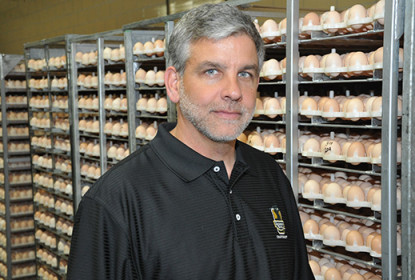
Biosecurity, Expert Advice, Global TOP NEWS, Infectious Diseases, News, PHT GLOBAL, PHT US, Respiratory, TOP NEWS
... Breaches in biosecurity: Sanderson Farms vet shares three valuable lessons
Nov 05, 2015Jennifer GrullonComments Off on Breaches in biosecurity: Sanderson Farms vet shares three valuable lessons
By Philip A. Stayer, DVM Corporate Veterinarian, Sanderson Farms, Inc.... New coccidiosis-management initiative aims to reduce losses
Oct 14, 2015Jennifer GrullonComments Off on New coccidiosis-management initiative aims to reduce losses
Targeting the global poultry industry’s more than $3 billion in annual losses to coccidiosis, Zoetis Inc. introduced a new, science-based initiative to help poultry producers worldwide develop...... Tips for feeding poultry raised without antibiotics
Oct 13, 2015Jennifer GrullonComments Off on Tips for feeding poultry raised without antibiotics
Growers replacing antibiotics in poultry diets face a steep learning curve filled with variables relating to bird health, disease pressure, feed inputs and housing, according to WattAgNet.... Managing ILT: Traditional CEO vaccines still provide ‘best protection’
Sep 30, 2015Jennifer GrullonComments Off on Managing ILT: Traditional CEO vaccines still provide ‘best protection’
John Glisson, DVM — professor emeritus at the University of Georgia and well-known respiratory disease specialist — talks about the ups and downs on infectious laryngotracheitis (ILT) in poultry...... Fine-tuning rotation plan can improve coccidiosis management
Sep 29, 2015Jennifer GrullonComments Off on Fine-tuning rotation plan can improve coccidiosis management
Broiler producers have made important strides in managing coccidiosis but could further improve control and cut losses by rethinking their strategy for anticoccidial rotation, say veterinarians who...... Ionophores look different to other scientists, too
Sep 28, 2015Jennifer GrullonComments Off on Ionophores look different to other scientists, too
Several organizations have drawn the line distinguishing ionophores from other types of antibiotics.... Are ionophores antibiotics? That depends on whom you ask
Sep 28, 2015Jennifer GrullonComments Off on Are ionophores antibiotics? That depends on whom you ask
In the EU — a market often perceived to be less tolerant of antibiotic use in food animals than the US — antibiotics used for growth promotion were banned in 2006. However, certain ionophores,...... Ionophores: The price of elimination
Sep 28, 2015Jennifer GrullonComments Off on Ionophores: The price of elimination
Published reports indicate that poultry operations not using any type of antibiotic, including ionophores, are indeed experiencing setbacks in production and flock welfare.... Omitting ionophores raises ethical conflicts for veterinarians
Sep 28, 2015Jennifer GrullonComments Off on Omitting ionophores raises ethical conflicts for veterinarians
Some advocacy groups believe that more restaurants and foodservice companies should follow the lead of Chipotle, Panera and Chick-fil-A, which only buy chickens raised without any products classified...... Complex broiler-vaccine decisions require expert advice
Sep 28, 2015Jennifer GrullonComments Off on Complex broiler-vaccine decisions require expert advice
Developing a vaccination program targeting optimal performance and return requires more planning and expertise than local “experts” at the farm store can offer.... High stocking density predisposes broilers to NE
Sep 28, 2015Jennifer GrullonComments Off on High stocking density predisposes broilers to NE
High stocking density has adverse effects on broiler welfare and intestinal health and predisposes the birds to necrotic enteritis (NE), according to the results of an experiment conducted by...... Editorial: Ignoring the 800-pound gorilla
Sep 28, 2015Jennifer GrullonComments Off on Editorial: Ignoring the 800-pound gorilla
With all the worries about avian influenza in the US and other major poultry markets, you’d think a magazine named Poultry Health Today would have made flu its cover story and surrounded the topic...... The “Huddling Syndrome” in the southeastern US broiler chicken industry: on-going investigations
Sep 27, 2015Jennifer GrullonComments Off on The “Huddling Syndrome” in the southeastern US broiler chicken industry: on-going investigations
By Drs. Alexis Kiers, Samantha Pohl, Holly Sellers, Monique Franca, Brian Jordan, Stephen Roney Poultry Diagnostic and Research Center, University of Georgia, Athens, GA... Sanderson’s Phil Stayer: ‘Sustainability is really nothing new for poultry’
Sep 20, 2015Jennifer GrullonComments Off on Sanderson’s Phil Stayer: ‘Sustainability is really nothing new for poultry’
Maintaining good intestinal health is particularly important for sustainability because the condition of the gut ultimately determines a flock’s growth rate and feed conversion.... ‘Rotate smarter,’ says coccidiosis specialist
Sep 19, 2015Jennifer GrullonComments Off on ‘Rotate smarter,’ says coccidiosis specialist
Poultry producers need to “rotate smarter” and learn the differences between anticoccidials if they want to maintain effective and sustainable coccidiosis-management programs, says well-known...... Will antibiotic-free trend make US broiler producers less competitive?
Sep 17, 2015Jennifer GrullonComments Off on Will antibiotic-free trend make US broiler producers less competitive?
The cascade of food service outlet pledges to purchase only chicken from flocks that have been raised without antibiotics is causing a major shift in how broilers are raised in the US, according to a...... Sustainability: What on earth does it really mean? And how does it apply to poultry health?
Sep 10, 2015Jennifer GrullonComments Off on Sustainability: What on earth does it really mean? And how does it apply to poultry health?
In the poultry industry, sustainability trends are reshaping every link in the production chain. But what exactly does it mean for poultry to be “sustainable”?... Waste-heat recovery system could save millions annually while improving air quality
Sep 09, 2015Jennifer GrullonComments Off on Waste-heat recovery system could save millions annually while improving air quality
A team of researchers and engineers from the University of Missouri has developed a waste-heat recovery system that could lead to significant savings in propane costs for producers heating their...... Environmental risk analysis helps ensure best results with in ovo vaccination
Aug 31, 2015Jennifer GrullonComments Off on Environmental risk analysis helps ensure best results with in ovo vaccination
By Tarsicio Villalobos, DVM Director, Technical Service, Biodevices Zoetis Inc.... Sustainability: What does it mean to poultry health?
Aug 27, 2015Jennifer GrullonComments Off on Sustainability: What does it mean to poultry health?
In agriculture, sustainability translates to producing more with less — a goal that morphs into a dire need when looking at global population trends. According to a recent UN report, food...... Eight ways to protect your farm from avian flu this fall
Aug 25, 2015Jennifer GrullonComments Off on Eight ways to protect your farm from avian flu this fall
To prepare for the avian flu this fall, the National Chicken Council (NCC) has identified eight biosecurity principles for broiler and broiler-breeder producers.... British vets question health, welfare of free-range chickens
Aug 25, 2015Jennifer GrullonComments Off on British vets question health, welfare of free-range chickens
While activists tout the happier, healthier life of free-range chickens, veterinarians in Great Britain have expressed concern about their long-term sustainability and increased likelihood of a major...... Vets treat chickens to prevent foodborne illness
Aug 18, 2015Jennifer GrullonComments Off on Vets treat chickens to prevent foodborne illness
In the latest episode of Vets on Call, Dr. Pohl and Dr. Chuck Hofacre of the University of Georgia visit a broiler farm to examine the flock’s response to a vaccine.... Poultry vets are latest focus of popular YouTube series
Aug 16, 2015Jennifer GrullonComments Off on Poultry vets are latest focus of popular YouTube series
The popular YouTube series, Veterinarians on Call, recently turned its cameras on two poultry veterinarians from the University of Georgia to help educate the public on modern poultry production.... How ionophores control coccidiosis
Aug 15, 2015Jennifer GrullonComments Off on How ionophores control coccidiosis
by H. David Chapman, PhD University Professor Department of Poultry Science University of Arkansas... Temperature, relative humidity, bird size affect broiler-house ventilation
Aug 10, 2015Jennifer GrullonComments Off on Temperature, relative humidity, bird size affect broiler-house ventilation
Optimal air quality in tunnel-ventilated broiler houses is a function of temperature, relative humidity, bird heat production and air velocity, according to new research conducted at the University...... Producing Grade A chicken starts in the broiler house
Aug 05, 2015Jennifer GrullonComments Off on Producing Grade A chicken starts in the broiler house
In order to produce Grade A chicken at the processing plant, poultry producers must place healthy chicks and maintain bird quality throughout the life cycle.... Reducing false positives pays in ELISA mycoplasma testing
Aug 05, 2015Jennifer GrullonComments Off on Reducing false positives pays in ELISA mycoplasma testing
Poultry producers should consider specificity when selecting a Mycoplasma ELISA test to avoid costs associated with false positives.... Got maxima? New sampling procedure aids detection in broilers
Aug 04, 2015Jennifer GrullonComments Off on Got maxima? New sampling procedure aids detection in broilers
A modified sampling procedure developed by researchers at Zoetis Inc. has dramatically improved the detection of Eimeria maxima infection in broilers.... New app improves cold-weather ventilation for poultry
Aug 03, 2015Jennifer GrullonComments Off on New app improves cold-weather ventilation for poultry
A new app — appropriately named CHKMINVENT — is designed to give poultry producers an easy-to-use means to calculate minimum ventilation rates in their houses during cold weather conditions.... Flu panel examines US control efforts, impacts on trade
Aug 02, 2015Jennifer GrullonComments Off on Flu panel examines US control efforts, impacts on trade
With well over 200 outbreaks affecting more than 47 million poultry over the last six months, highly pathogenic avian influenza (HPAI) is hitting the US poultry industry hard.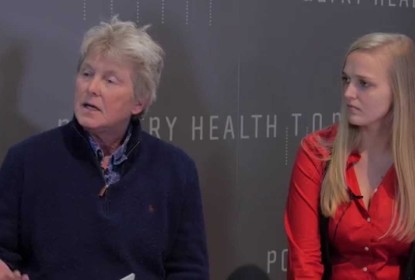
Diagnostics, Global TOP NEWS, Gut Health, ippe2015- Interviews with experts, News, PHT GLOBAL, PHT US, TOP NEWS, Videos
... Coccidiosis research yielding new perspectives on AST
Jul 30, 2015Jennifer GrullonComments Off on Coccidiosis research yielding new perspectives on AST
Adding molecular biology (PCR) to anticoccidial sensitivity testing (AST), offers a more in-depth look — and surprising findings — of Eimeria species contributing to coccidiosis in poultry...... Isolates implicate humans in rapid spread of HPAI
Jul 28, 2015Jennifer GrullonComments Off on Isolates implicate humans in rapid spread of HPAI
A recent analysis of the viral isolates from all outbreaks of highly pathogenic avian influenza (HPAI) in North America points to humans and farm equipment as the leading carriers of the disease from...... Avian flu cases in US expected to decline with warmer temperatures
Jul 21, 2015Jennifer GrullonComments Off on Avian flu cases in US expected to decline with warmer temperatures
USDA is predicting that avian influenza cases will drop off during the spring and summer months. Increased temperatures, decreased humidity and longer periods of ultraviolet light all play a role in...... Reality check: Technically, all poultry in the US is ‘antibiotic-free’
Jul 19, 2015Jennifer GrullonComments Off on Reality check: Technically, all poultry in the US is ‘antibiotic-free’
Confidently presenting facts can go a long way toward shaping consumer opinions about commercial poultry production and the importance of maintaining flock health, welfare and efficiency. For this...... Sanderson CEO gives three reasons for sticking with antibiotics
Jul 18, 2015Jennifer GrullonComments Off on Sanderson CEO gives three reasons for sticking with antibiotics
Count Joe Sanderson Jr., chairman and CEO of Sanderson Farms, as being on the opposite side of the current movement to shift away from the use of antibiotics in poultry production, according to a...... Pathogens on farm and in processing related
Jul 13, 2015Jennifer GrullonComments Off on Pathogens on farm and in processing related
Salmonella and Campylobacter prevalence and loads on the farm are significantly associated with prevalence and loads of the same pathogens at processing.... Avian influenza expected across entire US for fall
Jul 13, 2015Jennifer GrullonComments Off on Avian influenza expected across entire US for fall
The US is preparing for the “worst-case scenario” of highly pathogenic H5N2 avian influenza present in all US flyways during the fall of 2015, explained John Clifford, DVM, chief veterinary...... New tool helps identify Salmonella serotypes
Jul 08, 2015Jennifer GrullonComments Off on New tool helps identify Salmonella serotypes
A new cost-effective diagnostic tool takes aim at identifying numerous serotypes of Salmonella — including the highly virulent Salmonella enterica — which is associated with human illness.... Judicious drug use: The good, the bad and the ugly
Jun 29, 2015Jennifer GrullonComments Off on Judicious drug use: The good, the bad and the ugly
According to FDA, judicious use means administering an antimicrobial drug appropriately — and only when necessary.... FDA Releases Biannual Progress Report on Judicious Use of Antimicrobials in Food-producing Animals
Jun 22, 2015Jennifer GrullonComments Off on FDA Releases Biannual Progress Report on Judicious Use of Antimicrobials in Food-producing Animals
The U.S. Food and Drug Administration announced today its second progress report on its strategy to promote the judicious use of antimicrobials in food-producing animals.... The growing importance of nighttime air quality
Jun 18, 2015Jennifer GrullonComments Off on The growing importance of nighttime air quality
By Drs. Michael Czarick, Brian Fairchild and Brian Jordan Department of Poultry Science, University of Georgia, Athens, GA... Prevention claims essential for ensuring flock health, welfare
Jun 16, 2015Jennifer GrullonComments Off on Prevention claims essential for ensuring flock health, welfare
New FDA guidelines that discourage using medically important antibiotics for promoting growth in food animals appear to have been well-received by both producers and most consumer activists.... Webinar to examine new VFD rules for poultry, livestock
Jun 09, 2015Jennifer GrullonComments Off on Webinar to examine new VFD rules for poultry, livestock
An interactive webinar to help the poultry and livestock industries understand the FDA’s new rules for the Veterinary Feed Directive (VFD) has been set for Wednesday, June 17, at 2 pm EDT.... Guidelines at a glance
Jun 05, 2015Jennifer GrullonComments Off on Guidelines at a glance
Highlights of the new U.S. Food and Drug Administration guidelines for antimicrobial usage in poultry and livestock.... FDA issues rule requiring veterinary supervision of medically important antimicrobials
Jun 02, 2015Jennifer GrullonComments Off on FDA issues rule requiring veterinary supervision of medically important antimicrobials
The US Food and Drug Administration announced today its final rule for the Veterinary Feed Directive (VFD) — a move that is said to be “an important piece of the agency’s overall strategy to...... Poultry vet reviews nuts and bolts of FDA’s new antimicrobial guidelines
May 29, 2015Jennifer GrullonComments Off on Poultry vet reviews nuts and bolts of FDA’s new antimicrobial guidelines
FDA recently rolled out new voluntary guidelines for antimicrobial usage in poultry and livestock — not just how the medications are categorized and prescribed, but also how, when and why they...... What’s causing ‘woody breast’ in poultry?
May 28, 2015Jennifer GrullonComments Off on What’s causing ‘woody breast’ in poultry?
A condition known as “woody breast” is puzzling US poultry scientists investigating why breast-muscle tissue from some broiler flocks is hard and tough instead of tender and juicy.... Walmart, Sam’s Club announce new animal welfare, antibiotic positions
May 27, 2015Jennifer GrullonComments Off on Walmart, Sam’s Club announce new animal welfare, antibiotic positions
Walmart and Sam’s Club recently announced new positions on animal welfare and the responsible use of antibiotics in farm animals.... Ammonia concentration versus ventilation rate
May 26, 2015Jennifer GrullonComments Off on Ammonia concentration versus ventilation rate
Monitoring ammonia levels in poultry houses can help producers to adjust ventilation rates and thus prevent problems.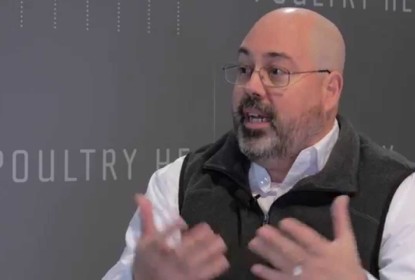
Global TOP NEWS, Infectious Diseases, ippe2015- Interviews with experts, News, PHT GLOBAL, PHT US, TOP NEWS, Videos
... Poultry vet urges poultry producers to guard against E. coli
May 21, 2015Jennifer GrullonComments Off on Poultry vet urges poultry producers to guard against E. coli
Long regarded as a secondary infection to respiratory disease, E. coli is now rated as a primary infection in many layer and broiler-breeder flocks, according to Jose Linares, DVM and technical...... Experience with GA 08 provides valuable information about IBV variants in poultry
May 08, 2015Jennifer GrullonComments Off on Experience with GA 08 provides valuable information about IBV variants in poultry
Experience with Georgia 2008 (GA 08) — the infectious bronchitis variant that’s caused major economic losses for poultry producers in the Southeast — has provided valuable information that will...... Media consultant: Let poultry vets tell the antibiotic story
May 07, 2015Jennifer GrullonComments Off on Media consultant: Let poultry vets tell the antibiotic story
The U.S. poultry industry needs to do a better job telling its story about antibiotics and their role in sustainable production and flock welfare, according to Frank Singleton, a media consultant...... Leading welfare, food-safety groups urge chicken Industry to reduce antibiotics responsibly
May 05, 2015Jennifer GrullonComments Off on Leading welfare, food-safety groups urge chicken Industry to reduce antibiotics responsibly
ASPCA (American Society for the Prevention of Cruelty to Animals) and Center for Food Safety: "Eliminating the routine use of [antibiotics] without addressing the birds’ underlying health problems...
Antibiotic-free, Global TOP NEWS, Gut Health, ippe2015- Interviews with experts, News, PHT GLOBAL, PHT US, TOP NEWS, Videos
... Poultry specialist offers tips for managing gut health through better nutrition
Apr 30, 2015Jennifer GrullonComments Off on Poultry specialist offers tips for managing gut health through better nutrition
Nutritionist Brett Lumpkins, PhD, of Southern Poultry Research, Athens, Georgia, talks about antibiotic-free poultry production, the challenges it presents and how rations can be adjusted for better...... Shrewd moves: Like a chess match, anticoccidial rotation is a game of strategy at Wayne Farms
Apr 29, 2015Jennifer GrullonComments Off on Shrewd moves: Like a chess match, anticoccidial rotation is a game of strategy at Wayne Farms
Your next move might address an immediate need, but it also could determine what pieces are still standing later in the match.
Global TOP NEWS, ippe2015- Interviews with experts, News, PHT GLOBAL, PHT US, Sustainability, TOP NEWS, Videos
... Defining, and demonstrating, sustainability in the poultry industry
Apr 22, 2015Jennifer GrullonComments Off on Defining, and demonstrating, sustainability in the poultry industry
Billy Hargis, PhD, University of Arkansas, thinks the US poultry industry has already set high standards for sustainability, but its efforts are largely misunderstood and unappreciated.... What’s left if we lose antibiotics?
Apr 20, 2015Jennifer GrullonComments Off on What’s left if we lose antibiotics?
Bacterial resistance is developing quickly and many critically important drugs risk becoming obsolete. Disastrous consequences lie in wait therefore unless these drugs are used prudently.... Studies demonstrate the benefits of dual-needle in ovo vaccine delivery
Apr 20, 2015Jennifer GrullonComments Off on Studies demonstrate the benefits of dual-needle in ovo vaccine delivery
by Taylor Barbosa, DVM, PhD, ACPV, Director of Outcomes Research, Zoetis Inc.... Coccidiosis expert: Timing and combination of cocci control methods critical
Apr 18, 2015Jennifer GrullonComments Off on Coccidiosis expert: Timing and combination of cocci control methods critical
Greg Mathis, PhD, of Southern Poultry Research, Athens, Georgia, talks about the continued challenges managing coccidiosis and offers suggestions for improving management programs targeting the...... USDA proposes new measures to reduce Salmonella, Campylobacter
Apr 06, 2015Jennifer GrullonComments Off on USDA proposes new measures to reduce Salmonella, Campylobacter
The USDA’s Food Safety and Inspection Service (FSIS) on January 21 proposed new federal standards to reduce Salmonella and Campylobacter in ground chicken and turkey products as well as raw chicken...... Analysis of antimicrobial data confirms human-animal link
Apr 06, 2015Jennifer GrullonComments Off on Analysis of antimicrobial data confirms human-animal link
A new study by the European Food Safety Authority (EFSA) shows that there are also important differences in the consumption of antimicrobials in animals and in humans between European countries.... Broiler chicks show less tendon swelling, weight suppression in reovirus vaccine study
Apr 02, 2015Jennifer GrullonComments Off on Broiler chicks show less tendon swelling, weight suppression in reovirus vaccine study
A recent study showed that broiler chicks receiving higher reovirus antibody levels from conventionally vaccinated hens had a lower incidence of tendon swelling and were protected from weight...... Salmonella and coccidiosis: Is there a connection?
Mar 25, 2015Jennifer GrullonComments Off on Salmonella and coccidiosis: Is there a connection?
Chuck Hofacre, DVM, PhD, of the University of Georgia, talks about the relationship of salmonella and coccidiosis in poultry. He also offers tips for minimizing the presence of salmonella in live...... Industry roundtable: Raising poultry without antibiotics
Mar 19, 2015Jennifer GrullonComments Off on Industry roundtable: Raising poultry without antibiotics
Antibiotic-free poultry production remains uncharted territory that’s yielding varied results, a few surprises and an ethical dilemma for veterinarians, poultry experts said at an industry...... Potential link found between DDGS, necrotic enteritis in broilers
Mar 18, 2015Jennifer GrullonComments Off on Potential link found between DDGS, necrotic enteritis in broilers
USPOULTRY and the USPOULTRY Foundation announce the completion of a funded research project at Auburn University, Auburn, Ala., that found a potential link between feeding DDGS and necrotic enteritis...... Administration of a Salmonella Enteritidis to newly hatched broilers reduces colonisation and shedding of a Salmonella Enteritidis challenge strain
Mar 18, 2015Jennifer GrullonComments Off on Administration of a Salmonella Enteritidis to newly hatched broilers reduces colonisation and shedding of a Salmonella Enteritidis challenge strain
A new study in Belgium has revealed a strain of Salmonella Enteritidis which showed some promise to help reduce food-borne infections when given to chicks in the drinking water and was even more...... Action on antibiotics
Mar 10, 2015Jennifer GrullonComments Off on Action on antibiotics
In a March 3 announcement, McDonald’s said that while it would only source chicken raised without antibiotics important to human medicine, “the farmers who supply chicken for its menu will...... CDC turns to Yelp for tracking reports of foodborne illness
Mar 05, 2015Jennifer GrullonComments Off on CDC turns to Yelp for tracking reports of foodborne illness
The Centers for Disease Control (CDC) recently posted analysis of using the urban business-review site Yelp to identify unreported outbreaks of foodborne illness, reports the latest edition of...... White House forum targets antibiotic resistance, promotes responsible use in farm animals
Mar 05, 2015Jennifer GrullonComments Off on White House forum targets antibiotic resistance, promotes responsible use in farm animals
A recent White House forum on antibiotic stewardship brought together more than 150 key players from human and animal health constituencies in an effort to ensure responsible antibiotic use and...... Editorial: The animal doctor’s dilemma
Mar 05, 2015Jennifer GrullonComments Off on Editorial: The animal doctor’s dilemma
Today, some poultry veterinarians are being asked to avoid using antibiotics that have been reviewed, approved and licensed for use in poultry and other species by the US FDA.... FDA finds positive and negative trends in antimicrobial resistance in bacteria isolated from humans, retail meats and food animals
Mar 04, 2015Jennifer GrullonComments Off on FDA finds positive and negative trends in antimicrobial resistance in bacteria isolated from humans, retail meats and food animals
The Food and Drug Administration has released its National Antimicrobial Resistance Monitoring System (NARMS) 2011 Executive Report, showing both increasing and decreasing antimicrobial resistance...... ‘Location, location, location’ keys to successful in ovo vaccination
Mar 03, 2015Jennifer GrullonComments Off on ‘Location, location, location’ keys to successful in ovo vaccination
By Tarsicio Villalobos, DVM Director, Technical Service Zoetis Inc.... Link between fishmeal, Eimeria and necrotic enteritis in broilers explored
Feb 28, 2015Jennifer GrullonComments Off on Link between fishmeal, Eimeria and necrotic enteritis in broilers explored
Insights into how fishmeal in poultry rations and Eimeria infection may predispose broilers to necrotic enteritis come from a study by Australian investigators.... Animal antibiotic study launched by Colorado State University
Feb 27, 2015Jennifer GrullonComments Off on Animal antibiotic study launched by Colorado State University
Colorado State University researchers are conducting a series of studies to track antibiotic-resistant bacteria in the animal agriculture industry in an effort to determine if farm practices are...... Isolation of Campylobacter from the circulating blood of broilers
Feb 26, 2015Jennifer GrullonComments Off on Isolation of Campylobacter from the circulating blood of broilers
From a poultry processing viewpoint, Campylobacter presence in circulating blood of market-age broilers may increase the likelihood of cross-contamination between birds during slaughter.... Poultry vet offers tips for managing vaccination programs for infectious bursal disease (IBD)
Feb 26, 2015Jennifer GrullonComments Off on Poultry vet offers tips for managing vaccination programs for infectious bursal disease (IBD)
Producers have many options for vaccinating for infectious bursal disease (IBD), but there’s no blanket program for all operations or all seasons. Kalen Cookson, DVM, a veterinarian for Zoetis,...... Trade-offs needed in gangrenous dermatitis management
Feb 25, 2015Jennifer GrullonComments Off on Trade-offs needed in gangrenous dermatitis management
Don Ritter, DVM, of Mountaire Farms, Millsboro, Delaware, discusses his experiences managing gangrenous dermatitis in broilers, the disease’s relationship with coccidiosis and what producers can do...... Poultry research showcased at SCAD: students shine
Feb 24, 2015Jennifer GrullonComments Off on Poultry research showcased at SCAD: students shine
Mark Jackwood, PhD, University of Georgia talks about the recent Southern Conference of Avian Diseases (SCAD) and its significance to the poultry industry.... Farmer voice matters in building consumer trust
Feb 16, 2015Jennifer GrullonComments Off on Farmer voice matters in building consumer trust
Farmers will need to engage in conversations with consumers for the long term if they are to build trust in today’s food system.... Reduce odor from manure with free online tool
Feb 13, 2015Jennifer GrullonComments Off on Reduce odor from manure with free online tool
A team of Iowa State University (ISU) Extension and Outreach specialists have developed an online tool to help livestock and poultry producers compare odor mitigation techniques that could be useful...... 230 billion eggs vaccinated — and billions more to go
Feb 09, 2015Jennifer GrullonComments Off on 230 billion eggs vaccinated — and billions more to go
Crowds gathered at the Zoetis exhibit at the 2015 International Production and Processing Expo to help the company celebrate another milestone: 230 billion eggs vaccinated worldwide with Embrex...... Avian influenza report from California underscores importance of biosecurity
Feb 09, 2015Jennifer GrullonComments Off on Avian influenza report from California underscores importance of biosecurity
Reports of AI on a California poultry farm in January 2015 underscore the importance of being vigilant with biosecurity, says Carl Heeder, DVM.... Attracting new blood to poultry health
Feb 08, 2015Jennifer GrullonComments Off on Attracting new blood to poultry health
J. H. “Jim"" Denton, professor emeritus at the University of Arkansas, talks about the declining number of veterinarians and other poultry health professionals entering the industry and, more...... University of Arkansas faculty lead Poultry Sustainability Summit at International Conference
Feb 03, 2015Jennifer GrullonComments Off on University of Arkansas faculty lead Poultry Sustainability Summit at International Conference
University of Arkansas professors Marty Matlock and Greg Thoma led a sustainability workshop at the 2015 International Production and Processing Expo in Atlanta, Georgia.... Economic benefits of early chick placement
Jan 30, 2015Jennifer GrullonComments Off on Economic benefits of early chick placement
Taylor Barbosa, DVM, of Zoetis looks at research showing the benefits getting chicks on the floor as soon as possible.... IPPE 2015 breaks records for registrants and exhibitors
Jan 30, 2015Jennifer GrullonComments Off on IPPE 2015 breaks records for registrants and exhibitors
The 2015 International Production & Processing Expo (IPPE) is the largest show on record with an estimated 30,000 poultry, meat and feed industry leader attendees from all over the world.... Improving Rapid Detection Methods for Foodborne Pathogens
Jan 30, 2015Jennifer GrullonComments Off on Improving Rapid Detection Methods for Foodborne Pathogens
Researchers have developed a microfluidic device that exploits cell movement to separate live and dead bacteria during food processing.... Sanderson Farms’ Phil Stayer: ‘Mortality is the first measure of wellbeing’
Jan 30, 2015Jennifer GrullonComments Off on Sanderson Farms’ Phil Stayer: ‘Mortality is the first measure of wellbeing’
Phil Stayer, DVM, of Sanderson Farms says poultry health, welfare and sustainability should not be compromised for marketing purposes.... The changing face of reovirus in poultry
Jan 30, 2015Jennifer GrullonComments Off on The changing face of reovirus in poultry
Don Waldrip, DVM, of Zoetis talks about new variants or reovirus in poultry and the best ways to manage it.... Correlating lesion scores to microscores creates statistical model for efficacy, feed conversion in poultry
Jan 30, 2015Jennifer GrullonComments Off on Correlating lesion scores to microscores creates statistical model for efficacy, feed conversion in poultry
Georgia researcher Lorraine Fuller and graduate student Miguel Barrios, at University of Georgia, build new statistical model that saves poultry producers time and money by correlating lesion scores...... Sustainability: ‘It’s about continuous improvement’
Jan 29, 2015Jennifer GrullonComments Off on Sustainability: ‘It’s about continuous improvement’
Marty Matlock and Gregory Thoma of the University of Arkansas define sustainability as “continuous improvement” and discuss both the track record and the challenges of today’s poultry... Infectious bronchitis constantly evolving making it a tough target
Jan 28, 2015Jennifer GrullonComments Off on Infectious bronchitis constantly evolving making it a tough target
Infectious bronchitis may not show symptoms in live birds but surprises poultry producers with condemnations at processing, says Tim Cummings, DVM, technical service veterinarian for Zoetis.... Regulatory expert urges poultry producers to document, document, document
Jan 28, 2015Jennifer GrullonComments Off on Regulatory expert urges poultry producers to document, document, document
Henry Turlington, PhD, of AFIA, points out the implications of the new Food Safety and Modernization Act (FSMA) regulations and the need for improved communication and record keeping for poultry...... Infectious bronchitis: A moving target
Jan 28, 2015Jennifer GrullonComments Off on Infectious bronchitis: A moving target
University of Georgia’s Mark Jackwood, PhD, explains why infectious bronchitis keeps evolving and what poultry producers should do to stay ahead of the costly disease.... IPSF: Feed Sustainability in Theory and Practice
Jan 28, 2015Jennifer GrullonComments Off on IPSF: Feed Sustainability in Theory and Practice
US - On the opening day of the International Poultry Scientific Forum (IPSF) in Atlanta, 26 January, sustainability of the feed sector was among the topics addressed.... Frequent Application of Litter Amendments in Broiler Houses During Grow-out on Bird Health, Production and Environment
Jan 28, 2015Jennifer GrullonComments Off on Frequent Application of Litter Amendments in Broiler Houses During Grow-out on Bird Health, Production and Environment
A series of experiments at the University of Delaware show that frequent application of sodium bisulphate improved broiler production performance and foot pad quality and reduced ammonia emissions...... US Poultry Industry Responds to New Food Safety Proposal
Jan 28, 2015Jennifer GrullonComments Off on US Poultry Industry Responds to New Food Safety Proposal
The industry body, the National Chicken Council and one poultry processor have welcomed the aims of the recently announced proposal to reduce Salmonella and Campylobacter on poultry parts... S. Heidelberg colonization reduced with in-feed treatment
Jan 28, 2015Jennifer GrullonComments Off on S. Heidelberg colonization reduced with in-feed treatment
Broilers that received bacitracin methylene disalicylate (BMD®) plus a probiotic selected for its ability to survive the feed-pelleting process had a markedly lower prevalence of Salmonella...... APHIS veterinarian provides latest update on avian influenza
Jan 27, 2015Jennifer GrullonComments Off on APHIS veterinarian provides latest update on avian influenza
The current outbreak of highly-pathogenic avian influenza in British Columbia, Canada, and the Pacific Northwest of the United States is associated with wild bird migration in the Pacific flyway.... Rising issues with coccidiosis and necrotic enteritis
Jan 27, 2015Jennifer GrullonComments Off on Rising issues with coccidiosis and necrotic enteritis
Suzanne Dougherty, DVM, encourages “back to basics” with gut-health management while exploring new options... A look at animal wellbeing in the poultry industry
Jan 27, 2015Jennifer GrullonComments Off on A look at animal wellbeing in the poultry industry
Yvonne Vizzier Thaxton talks about animal wellbeing–the entire system of the animal including general health, behavior, nutrition, disease prevention–and how it contributes to...
Antibiotic-free, Global TOP NEWS, Gut Health, ippe2015- Highlights from our latest issue, News, PHT GLOBAL, PHT US, Sustainability, TOP NEWS
... Roundtable highlights: Raising poultry without antibiotics
Jan 27, 2015Jennifer GrullonComments Off on Roundtable highlights: Raising poultry without antibiotics
Antibiotic-free poultry production remains uncharted territory that’s yielding varied results, a few surprises and an ethical dilemma for veterinarians, poultry experts said at an industry...... How to make the most of your visit to the 2015 IPPE
Jan 26, 2015Jennifer GrullonComments Off on How to make the most of your visit to the 2015 IPPE
Industry leaders from all over the world will once again meet at the Georgia World Congress Center in Atlanta for the 2015 International Production & Processing Expo (IPPE) January 27-29... Keys to successful ABF production
Jan 22, 2015Jennifer GrullonComments Off on Keys to successful ABF production
Poultry health experts at a recent industry roundtable offered these suggestions for successful antibiotic-free production... What poultry is really raised without antibiotics?
Jan 22, 2015Jennifer GrullonComments Off on What poultry is really raised without antibiotics?
A variety of terms are used to describe poultry raised without antibiotics. Some are USDA approved and verified, but others are not. Here’s a look at what consumers are seeing in their meat cases,...... Sericea lespedeza found ineffective for coccidiosis control in chickens
Jan 22, 2015Jennifer GrullonComments Off on Sericea lespedeza found ineffective for coccidiosis control in chickens
Sericea lespedeza (SL), a warm-season legume shown to help control coccidiosis in lambs, had no anticoccidial activity in chickens, according to a study conducted at the University of Arkansas.... It’s back: Zoamix® adds flexibility to rotation plans
Jan 22, 2015Jennifer GrullonComments Off on It’s back: Zoamix® adds flexibility to rotation plans
Zoetis Inc. has relaunched Zoamix® (zoalene), a versatile synthetic anticoccidial for the prevention and control of coccidiosis in broilers and turkeys.... Coccidiosis: Why is it so difficult to manage?
Jan 22, 2015Jennifer GrullonComments Off on Coccidiosis: Why is it so difficult to manage?
With more than a dozen antimicrobials and a half dozen vaccines available for coccidiosis, why are US poultry producers still having such a difficult time managing this costly disease?... Memorable quotes and figures from the world of poultry health
Jan 22, 2015Jennifer GrullonComments Off on Memorable quotes and figures from the world of poultry health
... Sustainability ‘most highly discussed topic’ in poultry industry
Jan 14, 2015Jennifer GrullonComments Off on Sustainability ‘most highly discussed topic’ in poultry industry
Sustainability was the “most highly discussed topic” in the poultry industry during the second half of 2014, according to the current issue of Influence Feed, a newsletter published by Zoetis.... New vet oversight rules will affect more than half antimicrobials sold
Jan 08, 2015Jennifer GrullonComments Off on New vet oversight rules will affect more than half antimicrobials sold
In two years time, regulatory changes will come into effect that will cover 57 per cent of current antimicrobial sales for animals in the US.... Poultry disease identification made easier with test alteration
Dec 22, 2014Jennifer GrullonComments Off on Poultry disease identification made easier with test alteration
USDA scientists have found a way to make it easier to detect avian reticuloendotheliosis and Marek's disease by modifying an already available test.... AAAP-AVMA antimicrobial guidelines stress good management, judicious use
Dec 15, 2014Jennifer GrullonComments Off on AAAP-AVMA antimicrobial guidelines stress good management, judicious use
Recent guidelines from the American Association of Avian Pathologists and the American Veterinary Medical Association outline the judicious therapeutic use of antimicrobials while focusing on the...... Doing a 180: A little education goes a long way toward changing customers’ attitudes about antibiotics
Dec 11, 2014Jennifer GrullonComments Off on Doing a 180: A little education goes a long way toward changing customers’ attitudes about antibiotics
Back in 2008, Pfizer Animal Health (now Zoetis Inc.) conducted market research to get a better handle on consumer opinions about the use of antibiotics...... Too busy for sustainability? Think again
Dec 04, 2014Jennifer GrullonComments Off on Too busy for sustainability? Think again
Sure, sustainability is a sound and noble concept — something everyone needs to think about and practice — but try telling that to a veterinarian or producer in the middle of an infectious...... Field trials show practical, economic benefits of E. coli vaccine in broilers
Nov 13, 2014Jennifer GrullonComments Off on Field trials show practical, economic benefits of E. coli vaccine in broilers
Recent studies on two continents have demonstrated that a modified-live vaccine reduced losses from Escherichia coli in broilers, even when the disease challenge was strong.... Let coccidiosis organisms ‘see something different’
Nov 06, 2014Jennifer GrullonComments Off on Let coccidiosis organisms ‘see something different’
Poultry producers are losing ground to coccidiosis because they’re not implementing effective rotation programs that employ different types and classes of anticoccidials, says Don Waldrip, DVM, a...... Facing poultry’s consumer trust challenge
Nov 06, 2014Jennifer GrullonComments Off on Facing poultry’s consumer trust challenge
Where does poultry stand with consumers on issues such as antibiotic usage, animal welfare and food safety? What must be done to strengthen trust in poultry and the companies that produce it? Five...... Facing poultry’s consumer trust challenge
Nov 06, 2014Jennifer GrullonComments Off on Facing poultry’s consumer trust challenge
Where does poultry stand with consumers on issues such as antibiotic usage, animal welfare and food safety? What must be done to strengthen trust in poultry and the companies that produce it? Five...... Poultry welfare – expectations and reality
Nov 06, 2014Jennifer GrullonComments Off on Poultry welfare – expectations and reality
Welfare of poultry, especially laying hens, has become a major issue for commercial poultry producers in the last 15 to 20 years. What is happening to the commercial egg business is also setting the...... Antibiotic-free broiler production requires a paradigm shift
Nov 04, 2014Jennifer GrullonComments Off on Antibiotic-free broiler production requires a paradigm shift
Producers, veterinarians and nutritionists agree that antibiotic-free broiler production in the U.S. will place greater emphasis on farm management and nutrition.... Being more transparent: Media experts offer tips to poultry companies
Oct 30, 2014Jennifer GrullonComments Off on Being more transparent: Media experts offer tips to poultry companies
Between fast and easy Internet access, hundreds of cable channels, the explosion of social media, the rise of “citizen journalism” and the emergence of new digital news hubs and blogs, keeping...... Media specialist: ‘Get on the same message’ with poultry antibiotics, other topics
Oct 27, 2014Jennifer GrullonComments Off on Media specialist: ‘Get on the same message’ with poultry antibiotics, other topics
The poultry industry needs to “get on the same message” when talking about judicious antibiotic usage and other production topics, says Bryan Reber, PhD, a professor of public relations at the...... Breakthrough in coccidiosis research at Royal Veterinary College
Oct 27, 2014Jennifer GrullonComments Off on Breakthrough in coccidiosis research at Royal Veterinary College
Biological researchers at the University of London’s Royal Veterinary College (RVC) are a step closer to finding a new cost-effective vaccine for the intestinal disease, coccidiosis.... Life without antibiotics in poultry production
Oct 22, 2014Jennifer GrullonComments Off on Life without antibiotics in poultry production
U.S. poultry producers are using fewer and less antibiotics in broiler flocks as public concern over the use of antibiotics in food-producing animals intensifies.... Food industry consultant urges poultry industry to engage, educate customers through social media
Oct 20, 2014Jennifer GrullonComments Off on Food industry consultant urges poultry industry to engage, educate customers through social media
Today’s consumers are smarter, more engaged and “assume a certain amount of control over the things in their lives that they feel passionate about” says food industry consultant Frank...... Feed management for layers in enriched colonies
Oct 20, 2014Jennifer GrullonComments Off on Feed management for layers in enriched colonies
Enriched colonies are gaining ground in countries outside the EU, where they have been enforced by law, but how to best feed hens in this new housing system remains a matter of discovery.... Five ways to put sustainability into action today
Oct 16, 2014Jennifer GrullonComments Off on Five ways to put sustainability into action today
So how can commercial poultry producers make their poultry-health programs more sustainable — ethically, environmentally and economically?... Coccidiosis control takes long-term planning
Oct 15, 2014Jennifer GrullonComments Off on Coccidiosis control takes long-term planning
By Donald Waldrip, Senior Technical Services Veterinarian, Zoetis Inc.... Antibiotics in livestock and poultry production
Oct 14, 2014Jennifer GrullonComments Off on Antibiotics in livestock and poultry production
Antibiotic use and antibiotic resistance in humans and animals are some of the most complex topics that reporters are asked to cover. Being mindful of key words and statistics can help reporters...... Bone characteristics and femoral strength in commercial tom turkeys
Oct 13, 2014Jennifer GrullonComments Off on Bone characteristics and femoral strength in commercial tom turkeys
Reducing the energy and protein levels in the diet of male turkeys to 60 per cent of NRC recommendations improved both the strength and quality of the leg bones in a Michigan State University...... FDA reports positive trends in antimicrobial resistance
Oct 10, 2014Jennifer GrullonComments Off on FDA reports positive trends in antimicrobial resistance
The annual NARMS Executive Report focuses on resistance to antibiotics that are considered important in human medicine as well as multidrug resistance (described as resistance to three or more...... Practical programs for achieving sustainable coccidiosis control
Oct 09, 2014Jennifer GrullonComments Off on Practical programs for achieving sustainable coccidiosis control
By H. David Chapman, PhD University Professor, Department of Poultry Science, University of Arkansas









